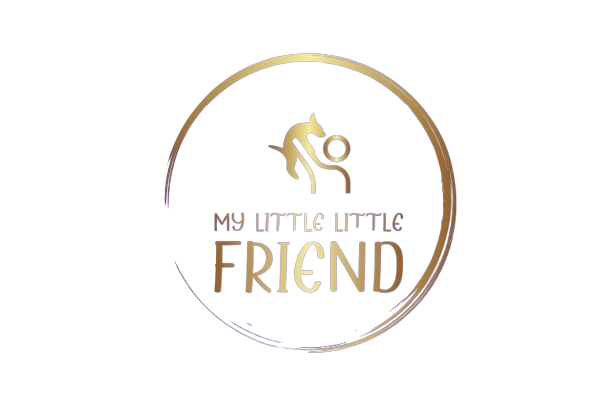Kitten Development From Birth To Adulthood
Witnessing the Wonder: A Kitten’s Journey from Fuzzball to Feline Formidable
Unfurling in your home is a captivating metamorphosis – a tiny, mewing neonate blossoming into a confident feline. Just like the brave young warriors of whiskered lore, your kitten embarks on an incredible journey. Understanding this amazing transformation will ensure they receive the perfect nutritional balance at each crucial stage.
From Fragile Fledgling to Playful Cub (0-4 weeks):
Blind and deaf at birth, your kitten relies on instinct and the warmth of their queen mother. Their focus is purely on survival – feeding and staying comfortable. Specialized kitten milk, packed with essential nutrients, fuels their rapid development.
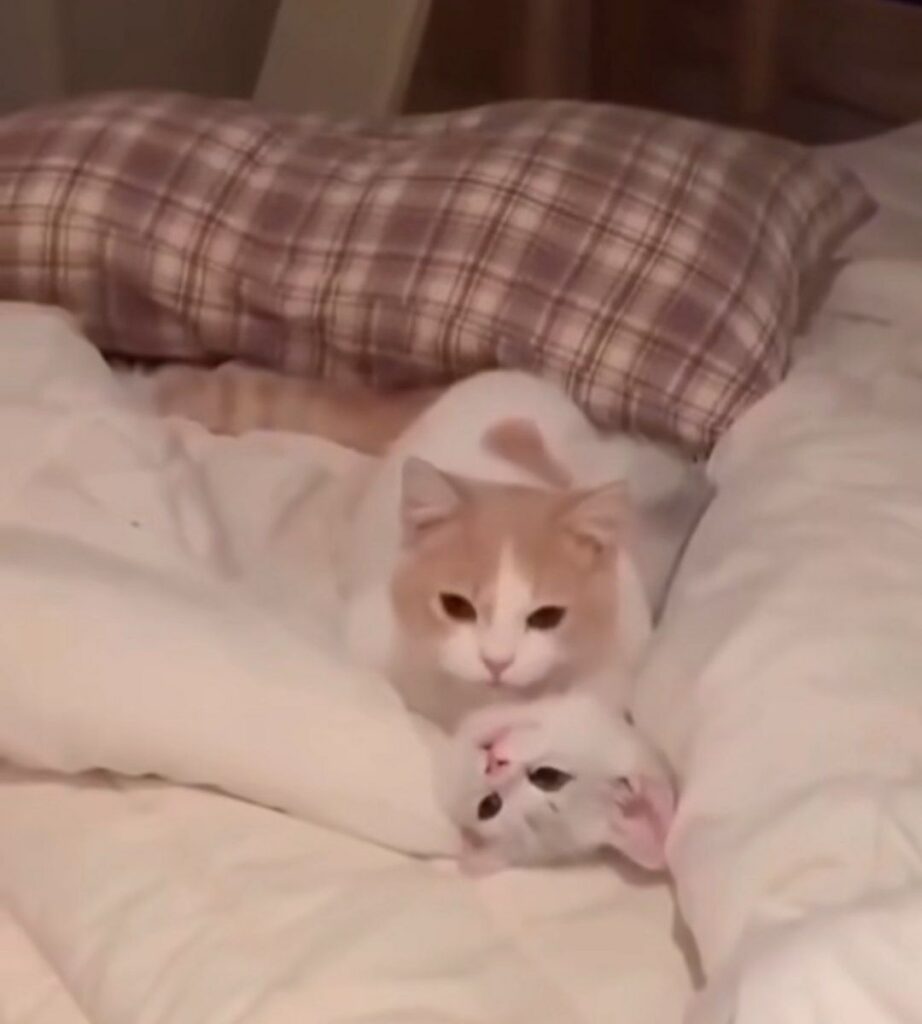
Awakening Senses and Exploring the World (4-8 weeks):
Eyes open! The world explodes in vibrant colors for your curious cub. Their wobbly steps morph into playful exploration, their meows transforming into a symphony of chirps and trills. Now, a specially formulated weaning food, rich in protein and fat, provides the energy to explore their newfound world.
Sharpening Skills and Honing Prowess (8-12 weeks):
Claws become instruments for playful swats, and milk teeth emerge, hinting at the mighty hunter within. Under the watchful eye of their matriarch, your cub learns the art of the stalk, the thrill of the pounce, and the importance of a well-placed bat at that enticing “feathered lure.” High-quality kitten food, with the right balance of protein, calcium, and other nutrients, fuels their development into skilled hunters.
A Fledgling Hunter Steps Out (12+ weeks):
Mock battles become displays of dominance as your kitten establishes their place in the world. Dependence on their mother wanes as they graduate to a “Hunter’s Bounty” – a balanced diet designed for growing feline bodies. Their playful meows mature into confident purrs – a sign of contentment and independence.
A Delicate Start: Protecting Kitten Health at Birth
The arrival of a litter of kittens is a joyous occasion, but it’s vital to be aware of the potential health risks they face right from the start. Here’s a closer look at the two main concerns for newborn kittens:
1. Oxygen Deprivation:
- Placental Abruption: During birth, the placenta nourishes and oxygenates the developing kittens. If the placenta detaches prematurely (placental abruption), it can lead to oxygen deprivation for the kitten.
- Symptoms: Kittens suffering from oxygen deprivation might appear weak, lethargic, or have difficulty breathing. They may also have a bluish tinge to their gums or tongue.
- Breeder’s Role: Monitoring the birthing process closely allows for immediate intervention if a kitten appears distressed. Techniques like gently stimulating the kitten or clearing mucus from the airways can be crucial.
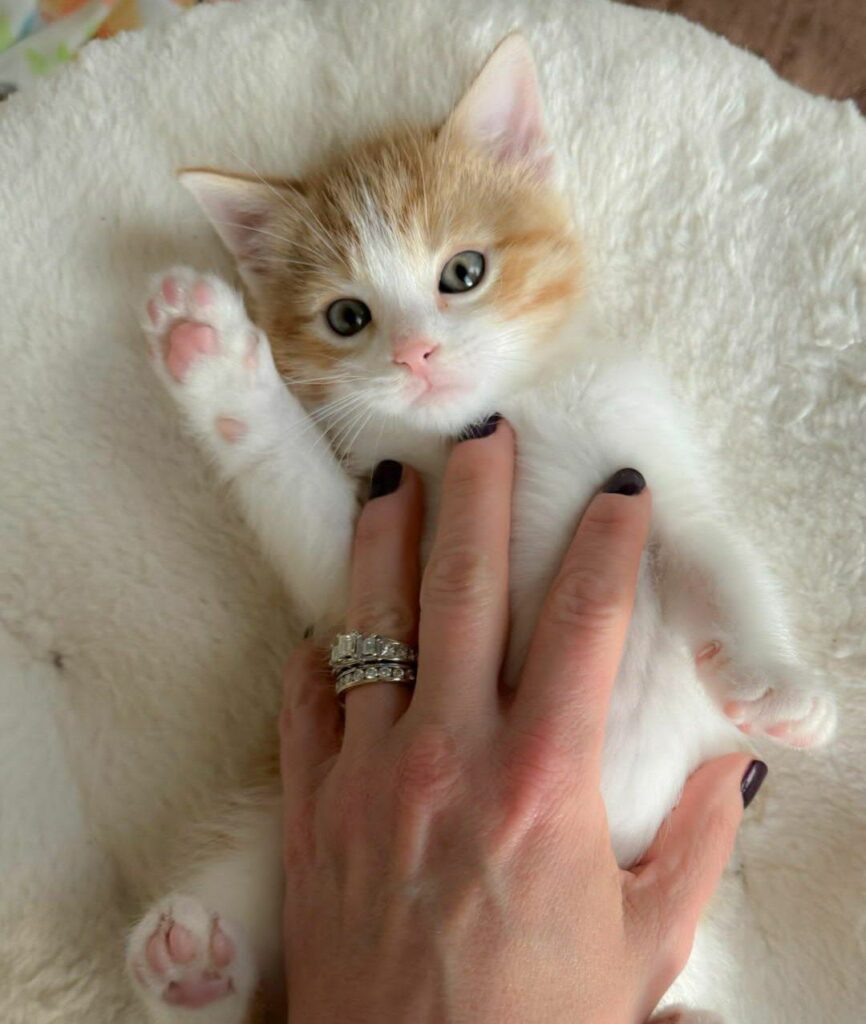
2. Exposure to Bacteria and Viruses:
- Vulnerability: Newborn kittens haven’t yet developed a strong immune system, making them susceptible to bacteria and viruses present in their environment.
- Transmission: These pathogens can be transmitted from the mother cat, other animals, or even the breeder themself.
- Breeder’s Role: Maintaining a clean and sanitized birthing environment is essential. The breeder should thoroughly wash their hands before handling the kittens and ensure the mother cat is healthy and free from potential infections.
Minimizing Risks, Maximizing Health:
By taking these precautions, breeders can significantly improve the health and survival rates of newborn kittens:
- Hygiene: Strict hygiene protocols are paramount. The birthing area should be disinfected before the birth and kept clean throughout.
- Monitoring: Closely monitoring the mother cat during birth allows for quick intervention if complications arise.
- Veterinarian Involvement: Consulting with a veterinarian before and after birth is vital. They can offer guidance on breeding practices, neonatal care, and potential health concerns.
By understanding these risks and taking proactive measures, breeders can ensure a healthy and happy start for their precious feline bundles of joy.
At The Birth Stage
A Symphony of Instincts: Understanding Newborn Kitten Behavior
Newborn kittens may seem helpless at first glance, but beneath their closed eyes and folded ears lies a symphony of instincts. These amazing little creatures exhibit a remarkable array of reflexive behaviors crucial for their survival in the first few weeks of life.
A World of Scent and Touch:
- Navigation by Senses: Despite lacking sight and hearing, kittens navigate their surroundings through scent and touch. They use their keen sense of smell to locate their mother and littermates, while their sensitive skin helps them find the warmth and comfort of their mother’s body.
- The Power of Touch: Tactile stimulation plays a vital role. A mother cat will instinctively lick her kittens, which encourages urination and defecation, keeping them clean. This licking also helps stimulate blood flow and breathing.
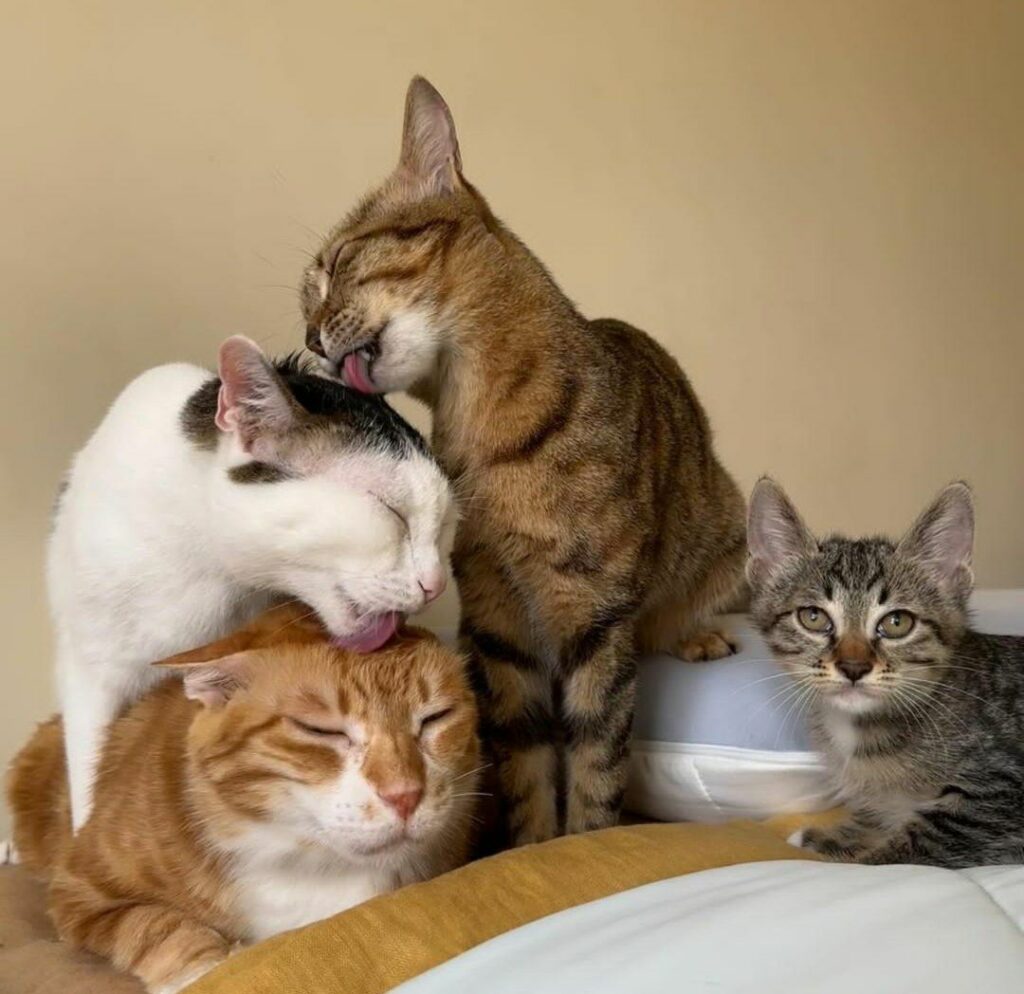
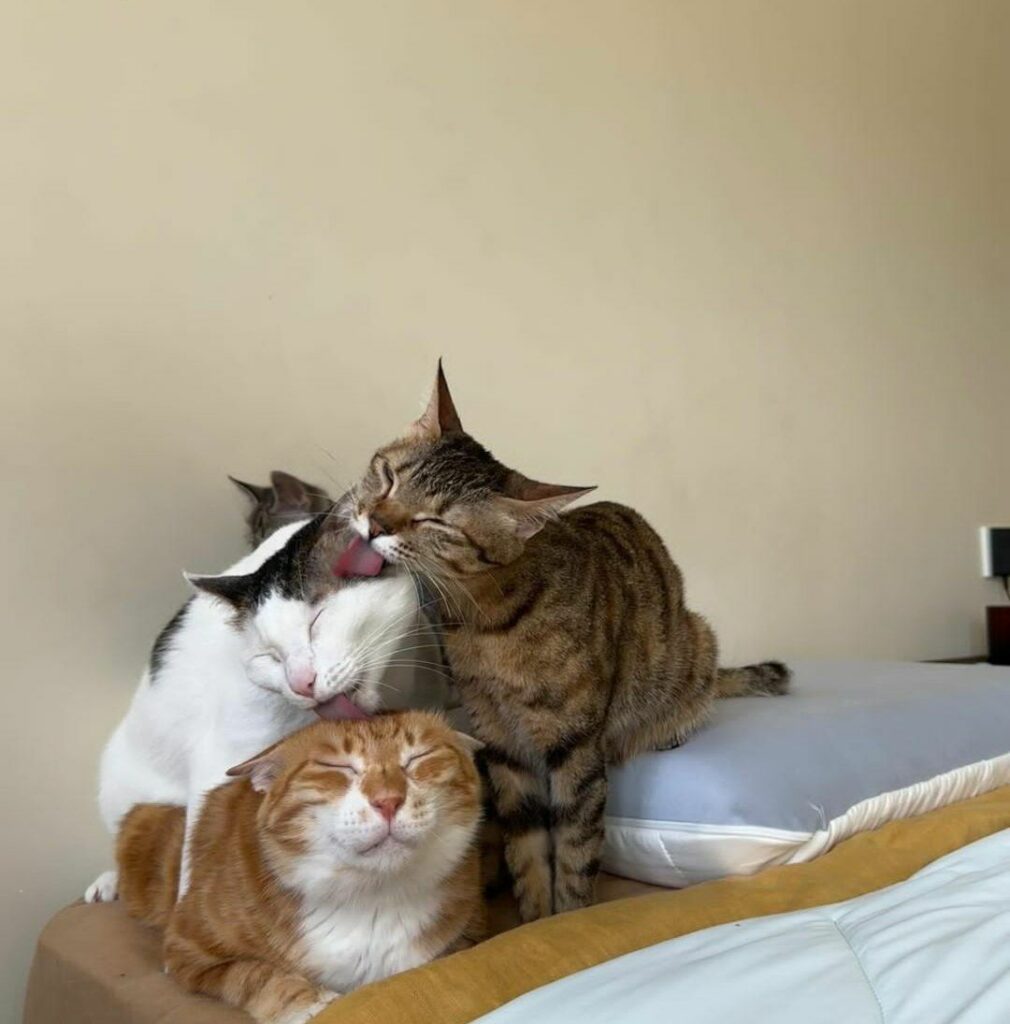
Fueling Growth and Development:
- The Importance of Nestling: Newborn kittens instinctively huddle close to their mother for warmth. This behavior, known as “nestling,” is crucial for maintaining their body temperature, as they are unable to regulate it themselves yet.
- The Drive to Suckle: Driven by a powerful instinct, kittens search for their mother’s nipples and begin suckling within hours of birth. Mother’s milk provides essential nutrients and antibodies that boost their immune system and fuel their rapid growth.
Understanding these early behaviors allows us to appreciate the incredible adaptations that ensure a kitten’s survival in its most vulnerable stage. Breeders and pet owners can use this knowledge to create a safe and supportive environment for newborn kittens, fostering their healthy development.
A Whirlwind of Growth: Understanding Kitten Development
The journey from a tiny, mewling ball of fur to a graceful, independent feline is nothing short of remarkable. Kitten development is a rapid and fascinating process, marked by significant milestones in a relatively short timeframe.
A Tiny but Mighty Start:
- Birth Weight: Kittens enter the world weighing a mere 2-3% of their mother’s weight. Despite their size, they are equipped with a powerful survival instinct.
- Rapid Growth: The first few days are a period of exponential growth. Kittens can gain up to 10% of their birth weight daily! Males tend to be slightly larger at birth and continue this faster growth rate.
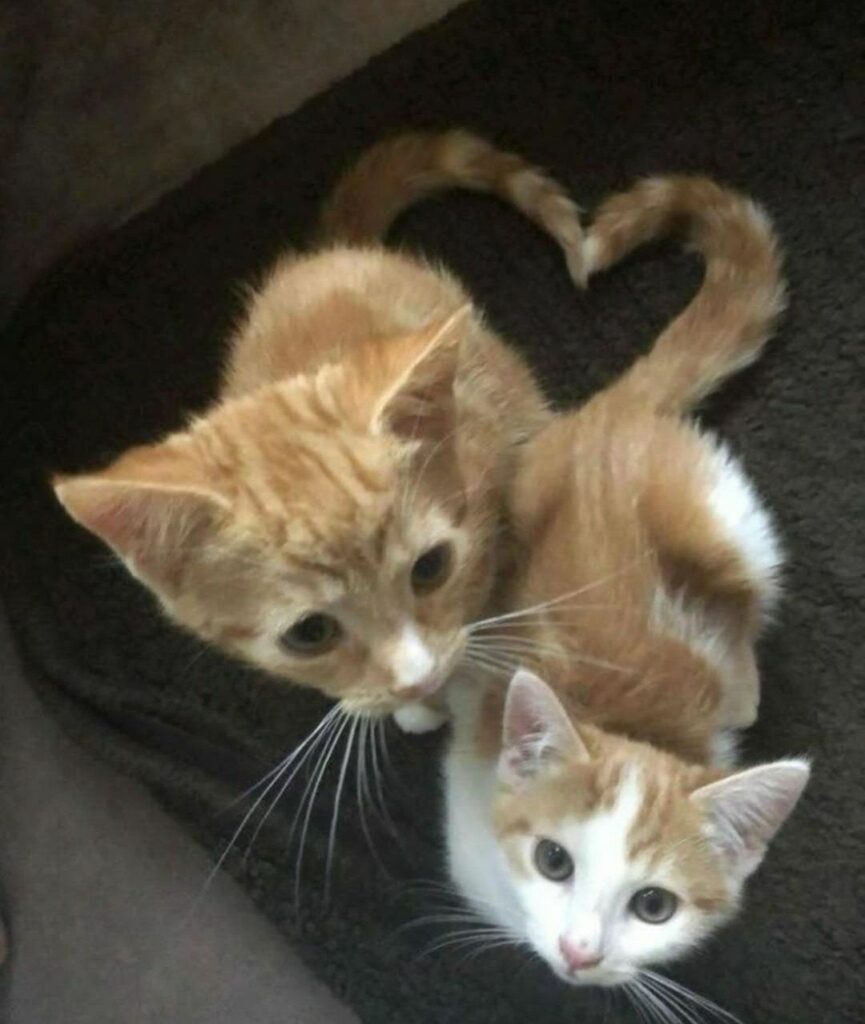
The First Weeks: A Sensory Awakening
- Sight and Hearing: Born blind and deaf, kittens rely on their other senses – smell and touch – to navigate their world. They use their keen sense of smell to locate their mother and the warmth of her body, crucial for temperature regulation.
- The Power of Scent: A mother cat’s scent plays a vital role. Kittens are drawn to her scent, allowing them to find her for nursing and comfort.
The Foundation for Future Health:
- Early Nutrition: Mother’s milk provides essential colostrum in the first few days, rich in antibodies that kickstart the kitten’s immune system. As they grow, mother’s milk continues to provide the perfect balance of nutrients for healthy development.
- Stimulating Development: The mother cat’s licking behavior not only keeps the kittens clean but also stimulates their breathing, elimination, and blood circulation.
Understanding these developmental milestones is essential for breeders and pet owners. By providing proper nutrition, a warm and safe environment, and minimal handling in the early stages, you can ensure a healthy and happy start for your tiny feline friend.
Creating a Cozy Haven: The Ideal Environment for Newborn Kittens
The arrival of a swathe of newborn kittens is a heartwarming occasion. However, these tiny balls of fur require a specific environment to thrive. Let’s delve into the essential elements for creating a cozy haven that ensures their health and well-being.
The Importance of Mom:
- Nature’s Perfect Provider: Newborn kittens are utterly dependent on their mothers for warmth, nourishment, and stimulation. A mother cat’s instincts take over, ensuring her kittens stay clean, fed, and comfortable. Separating kittens from their mother in the early stages can be detrimental to their health and development.

Temperature Regulation:
- Combating Hypothermia: Kittens are unable to regulate their body temperature effectively at birth. An ambient temperature of around 72°F (22°C) is crucial to prevent hypothermia, a condition where their body temperature drops dangerously low.
Humidity for Comfort:
- Maintaining Moisture Levels: An ideal humidity level of 65-70% helps prevent respiratory issues in newborn kittens. Dry air can irritate their delicate mucous membranes.
Designing the Perfect Nursery:
- Location, Location, Location: Choose a quiet, draft-free location away from household activity. This minimizes stress for the mother cat and ensures the kittens get the rest they need.
- A Bedding Fit for Royalty: Provide a comfortable and absorbent bedding material like soft towels or blankets. Ensure it’s changed regularly to maintain hygiene.
- A Warm Embrace: Consider using a heating pad set on low under half of the bedding, allowing the mother cat and kittens to choose between warm and cool areas.
Remember: Breeders and pet owners should avoid using direct heat sources like lamps, as these can pose a fire hazard.
By creating a safe, warm, and well-maintained environment, you can significantly contribute to the health and well-being of newborn kittens during their critical first few weeks. This paves the way for their remarkable transformation into playful, independent feline companions.
A Sleepy Start: Understanding the Neonatal Kitten
The world welcomes newborn kittens, these tiny bundles of fur, into a period known as the neonatal stage. This crucial phase, lasting roughly the first four weeks of life, is marked by a focus on basic needs – warmth, nourishment, and sleep.
Nestled in Comfort:
- Safety First: Newborn kittens instinctively huddle close to their mother and littermates. This behavior, known as “nestling,” provides essential warmth and a sense of security. They are particularly vulnerable in this early stage, relying on their mother’s protection from the outside world.
- The Power of Sleep: Kittens spend a large portion of their time sleeping – up to 90%! This sleep is vital for their growth and development. During sleep, their bodies release hormones that regulate growth and strengthen their immune system.
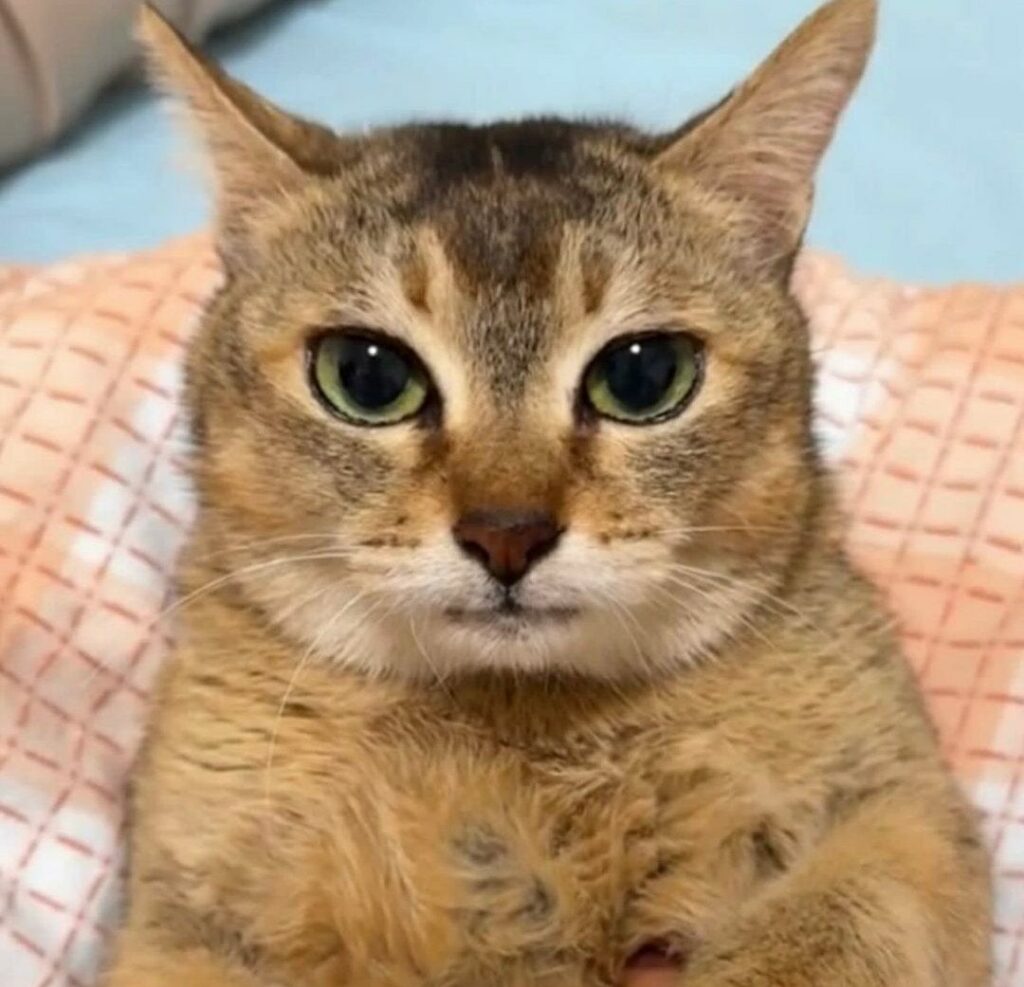
Fueling Growth:
- A Constant Need: Newborn kittens have a seemingly insatiable appetite. They nurse frequently, every few hours, receiving vital nutrients and antibodies from their mother’s milk. This milk is specially formulated to meet their specific needs for growth and development.
- Limited Activity: While not entirely inactive, newborn kittens’ movements are primarily limited to crawling towards their mother for feeding and finding a comfortable spot to nestle.
Understanding the characteristics of the neonatal stage allows breeders and pet owners to provide the optimal environment for their tiny feline charges. By ensuring warmth, a clean nesting area, and minimal disturbance, they can contribute to the healthy development of these precious bundles of joy.
At The Stage Of 0 - 3 Weeks
Safeguarding Tiny Lives: Essential Health Care for Newborn Kittens
The arrival of a swathe of newborn kittens is a joyous occasion. However, these tiny bundles of fur require a responsible approach to ensure their health and well-being. Here’s a breakdown of crucial health considerations for newborn kittens:
Veterinary Checkup: A Crucial First Step
- Early Intervention: Within the first few days of life, a visit to the veterinarian is vital. The vet will conduct a thorough examination to check for any birth defects or potential health issues that require early intervention. Addressing concerns promptly can significantly improve a kitten’s long-term health.
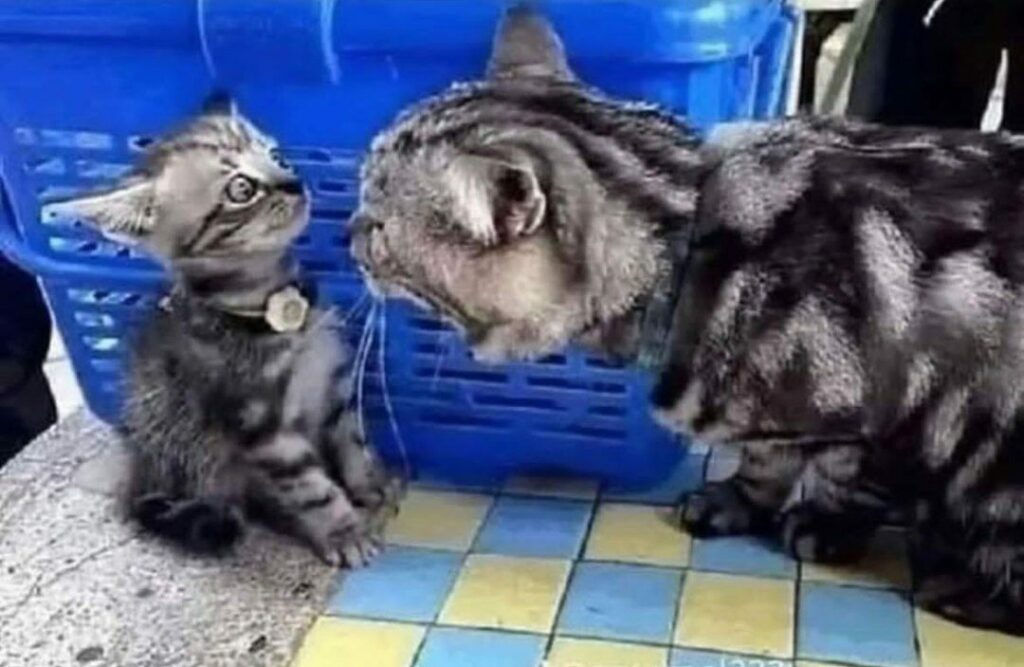
The Importance of Staying Together
- Separation Anxiety: Newborn kittens are utterly dependent on their mothers for warmth, nourishment, and emotional security. Separating them from their mother and littermates during the neonatal stage can have detrimental effects.
- Physical and Mental Development: Separation can hinder physical development by interrupting regular feeding and hindering essential stimulation received from the mother cat. It can also lead to emotional and behavioral problems like aggression or anxiety later in life.
Deworming for a Healthy Start
- Internal Parasites: Kittens are susceptible to internal parasites like roundworms and hookworms. These parasites can cause health problems like weight loss, diarrhea, and anemia.
- Deworming Schedule: A responsible breeder should initiate deworming at a young age. Typically, kittens are dewormed monthly for the first six months of life. A veterinarian will advise on the most appropriate deworming medication and schedule.
Additional Considerations:
- Vaccinations: At the appropriate age (usually starting around 6-8 weeks), kittens will require vaccinations to protect them from common feline illnesses.
- Hygiene: Maintaining a clean and sanitary environment is crucial to prevent the spread of bacteria and viruses, especially during this vulnerable stage.
By following these essential health care practices, breeders and pet owners can ensure a healthy and happy start for their newborn kittens, laying the foundation for a long and fulfilling life.
Fueling Growth: Nutritional Needs of Newborn Kittens
The first four weeks of a kitten’s life, the neonatal stage, are a period of incredible growth and development. During this crucial time, their nutritional needs are simple yet essential – mother’s milk.
Nature’s Perfect Formula:
- Antibody Boost: Mother’s milk, especially the colostrum produced in the first few days after birth, is rich in antibodies. These antibodies help kickstart the kitten’s immune system, providing vital protection against disease.
- Building Blocks of Life: Kitten milk is a complete and balanced food source, packed with the perfect blend of proteins, fats, carbohydrates, and vitamins specifically formulated for rapid growth and development.

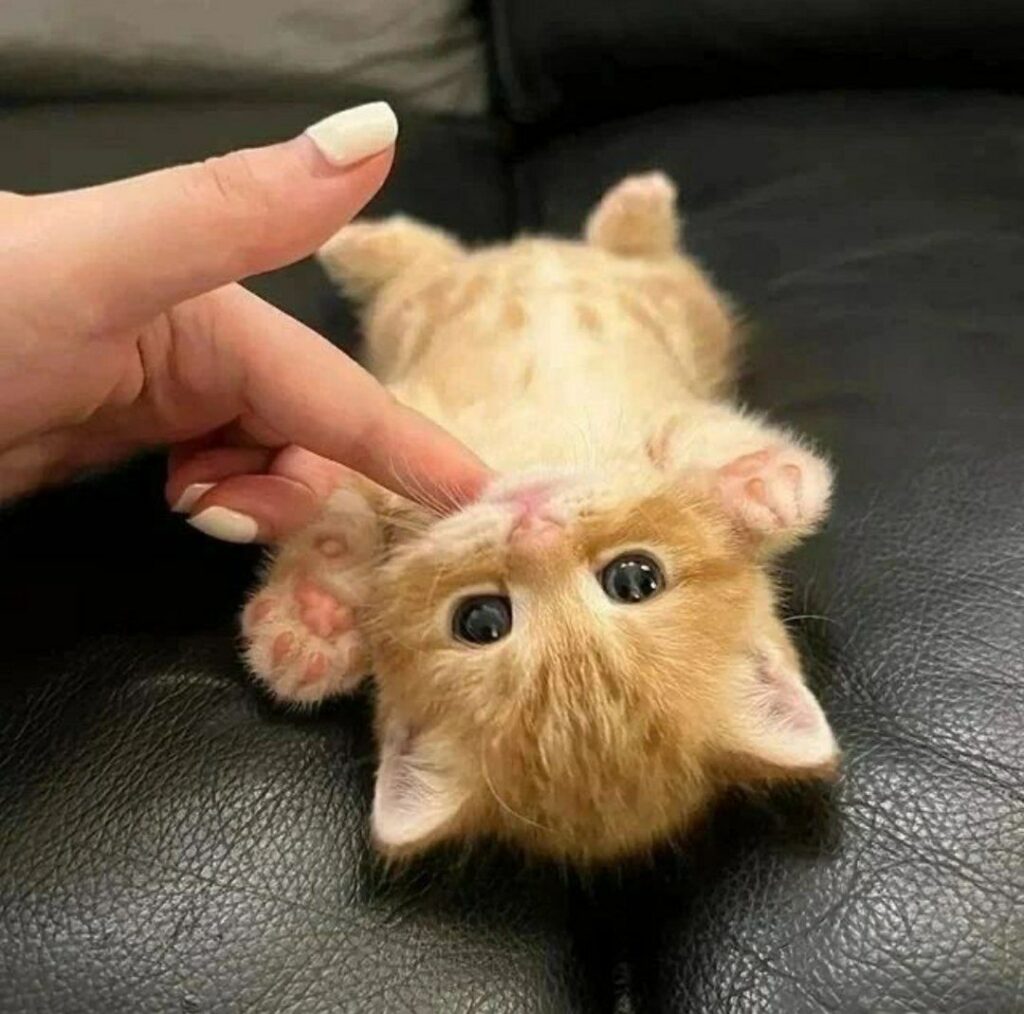
The Gradual Introduction of Water:
- Early Hydration: While mother’s milk provides most of the fluids a kitten needs in the first few weeks, they may begin to show an interest in water around four weeks old.
- Shallow and Accessible: To cater to their developing motor skills, provide a shallow bowl of clean, fresh water readily available for them to explore.
Transitioning to Solid Food:
- Preparation for the Future: Towards the end of the neonatal stage (around 4 weeks old), kittens may start showing interest in solid food. This is a natural progression as they prepare to wean off their mother’s milk.
- Gradual Introduction: The weaning process should be gradual and introduced under the guidance of a veterinarian. Starting with a specially formulated kitten food, moistened to a mushy consistency, eases the transition.
Important Considerations:
- Monitor Milk Intake: Ensure kittens are nursing regularly and gaining weight steadily. Any signs of lethargy, weight loss, or difficulty nursing might warrant a visit to the veterinarian.
- Hygiene: Maintain a clean and sanitary environment, including keeping food and water bowls clean to prevent the spread of bacteria and illness.
By understanding the unique nutritional needs of newborn kittens and providing them with mother’s milk and eventually, appropriate kitten food, breeders and pet owners can ensure these tiny furballs have the fuel they need to thrive during this critical growth period.
A Symphony of Sleep and Survival: Understanding Neonatal Kitten Behavior
Newborn kittens greet the world with a symphony of behaviors – a captivating blend of sleep, instinct, and early communication. This neonatal stage, lasting roughly the first four weeks of life, is marked by a fascinating interplay of actions focused on survival and growth.
A World of Slumber:
- Rest and Recuperation: Kittens spend a staggering 90% of their time in the first few weeks sleeping! This seemingly excessive slumber is crucial for their development. During sleep, growth hormones are released, and their bodies repair and strengthen.

Limited Movement, Powerful Instincts:
- Crawling for Comfort: While their movements are primarily limited to crawling, these seemingly purposeless actions are driven by powerful instincts. Kittens instinctively crawl towards their mother for the warmth and comfort of her body, vital for thermoregulation. They also navigate towards her for nourishment, fueled by the primal urge to nurse.
Early Communication:
- Purrfect Harmony: Even in this early stage, kittens display a repertoire of vocalizations. The iconic purr, often associated with contentment, is present from birth. It’s believed to be a form of communication with their mother, possibly indicating well-being or requesting nourishment.
- Meows for Attention: Kittens may also emit soft meows, particularly if they feel cold, hungry, or separated from their mother. These vocalizations are a vital way for them to communicate their needs.
Understanding these behaviors allows breeders and pet owners to create a safe and supportive environment for newborn kittens. By minimizing disruptions and ensuring a warm, clean space near their mother, they can contribute to the healthy development of these precious bundles of fur.
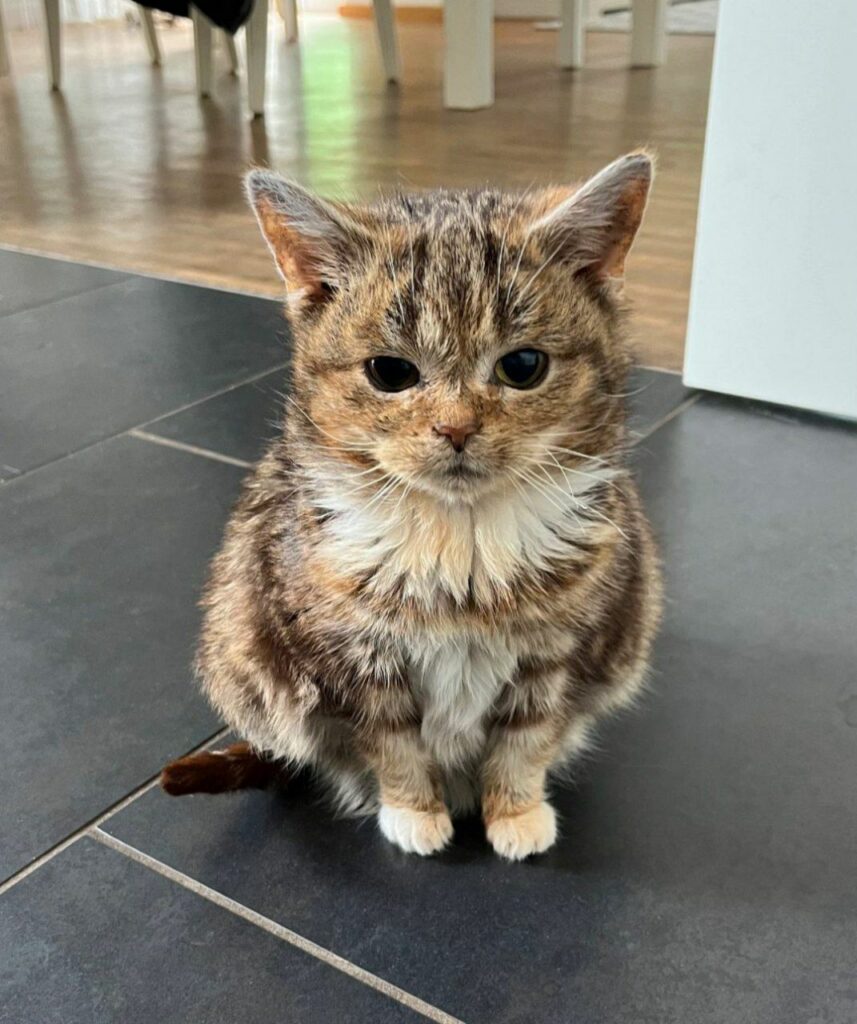
Certainly! Here’s a breakdown of a kitten’s development around five days old:

These early days are filled with exciting changes as kittens transition from a state of complete dependence on their mother to one where they begin to explore their surroundings. Their newfound ability to see plays a vital role in this exploration, and the loss of their umbilical cord signifies their increasing independence. The rapid weight gain during this period reflects their growing bodies and developing muscles. Overall, this stage marks a critical period in a kitten’s development as they take their first steps towards becoming independent cats.
A Haven of Warmth and Tranquility: The Ideal Environment for Newborn Kittens
The first few weeks of a kitten’s life are a crucial period for development. To ensure these tiny furballs thrive, creating a specific environment that caters to their needs is essential. Here’s a closer look at the key elements of a perfect haven for newborn kittens:
Peace and Quiet Reign Supreme:
- Noise Disruption: Newborn kittens require a calm and quiet environment. Excessive noise and distractions can disrupt their much-needed sleep, essential for growth and development. It can also make them feel stressed and anxious.
- Restful Slumber: By minimizing noise levels, you create a peaceful atmosphere that allows kittens to sleep soundly. Remember, they spend a whopping 90% of their time in the first few weeks slumbering!
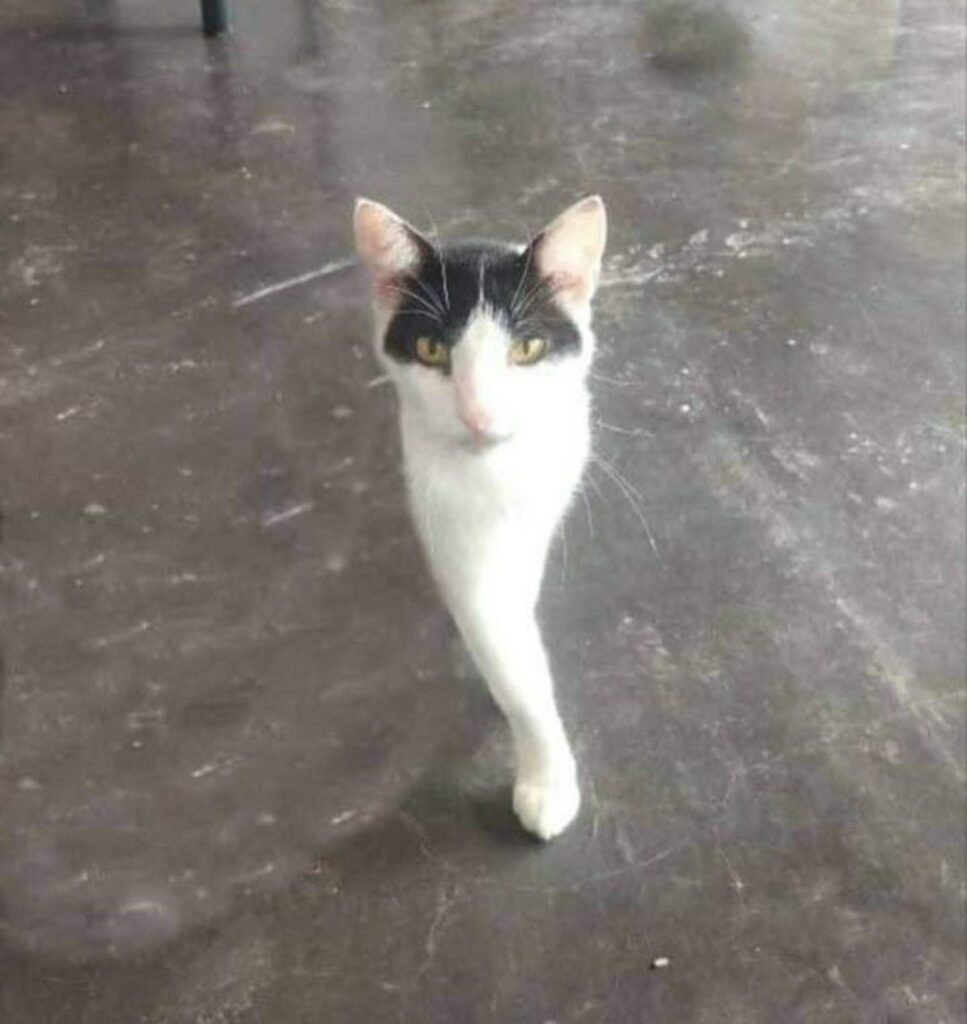
A Toasty Embrace:
- Maintaining Body Temperature: Newborn kittens are unable to regulate their body temperature effectively. A safe and warm environment is vital for their survival. The ideal temperature range is above 93.2°F (34°C).
- Consequences of Chilling: If a kitten’s temperature drops below 93.2°F, their ability to digest their mother’s milk is compromised. Even lower temperatures, around 89.6°F (32°C), can cause them to lose their suckling reflex, hindering their ability to feed altogether.
Creating a Safe Haven:
- Location, Location, Location: Choose a quiet, draft-free location away from household activity. This minimizes stress for the mother cat and ensures the kittens get the uninterrupted sleep they need.
- Warm Bedding: Provide a comfortable and absorbent bedding material like soft towels or blankets. Ensure it’s changed regularly to maintain hygiene. Consider using a heating pad set on low under half of the bedding, allowing the mother and kittens to choose between warm and cool areas. Remember: Avoid using direct heat sources like lamps, as these can pose a fire hazard.
By creating a clean, calm, and warm environment, breeders and pet owners can significantly contribute to the health and well-being of newborn kittens during their critical first few weeks. This foundation ensures a smooth transition into the next exciting phase of their development – a world filled with exploration, play, and the gradual march towards feline independence.
A Time of Transformation: The Weaning Process Explained
As a kitten reaches around four weeks old, their tiny world undergoes a fascinating shift. This period marks the beginning of weaning, a crucial stage where they transition from relying solely on their mother’s milk to incorporating solid food into their diet. It’s more than just a dietary change; it’s a time of accelerated physical development and invaluable social learning.
Growth Spurt and Sensory Exploration:
- Physical Development: A kitten’s physical development ramps up during weaning. Their muscles become stronger, and their senses become more acute. This newfound energy and curiosity propel them to explore their surroundings with newfound confidence.

Learning from the Best:
- Observing Mom: The mother cat plays a vital role during weaning. Kittens observe her eating habits and learn essential skills like how to lap up water or food. This social interaction helps shape their future behavior.
- Sibling Rivalry (with Love): Interaction with littermates also plays a significant role. Playful wrestling and gentle swats not only build physical prowess but also teach valuable social skills like bite inhibition and communication.
A Gradual Transition:
- Introducing Solid Food: The weaning process should be gradual and introduced under the guidance of a veterinarian. Starting with a specially formulated kitten food, moistened to a mushy consistency, eases the transition from milk to solid food.
- Mother’s Milk Still Important: While kittens begin to explore solid food options, mother’s milk remains a vital source of nutrients and antibodies throughout the weaning process.
Understanding the importance of weaning allows breeders and pet owners to provide the necessary support during this critical time. By offering a variety of moistened kitten food options and ensuring continued access to their mother, they can contribute to a healthy and successful weaning process for their furry friends.
At The Stage Of 4 - 8 Weeks
Nature’s Cue: Milk Teeth and the Art of Weaning
The weaning process in kittens isn’t just about introducing solid food; it’s a fascinating interplay between physical development and natural instinct. Here’s a closer look at the nutritional shifts that occur around this crucial stage:
Teething Time:
- The Trigger for Change: The development of a kitten’s milk teeth, typically around four weeks old, is a natural trigger for weaning. These tiny teeth allow them to explore textures and handle solid food.
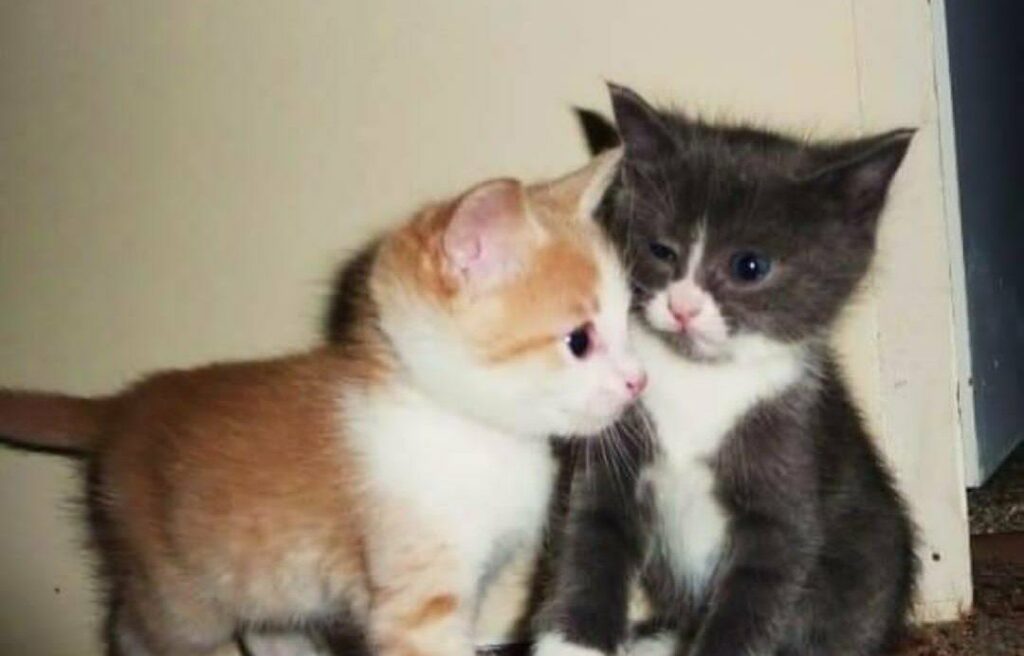
A Growing Appetite:
- Curiosity and Exploration: As kittens become more mobile and curious, they naturally begin to show an interest in their mother’s food. This investigative behavior is a sign that their digestive system is maturing and ready to handle new challenges.
A Gentle Transition:
- Importance of Easy Digestion: A kitten’s digestive system is still developing, so it’s crucial to introduce easily digestible food during weaning. Specially formulated kitten food, moistened to a mushy consistency, provides the necessary nutrients without overwhelming their delicate digestive tract.
Meeting Specific Needs:
- Tailored Nutrition: Kitten food is specifically formulated to meet the unique nutritional needs of growing felines. It’s rich in protein, essential for muscle development, and contains the right balance of fats, vitamins, and minerals to support their overall health.
Working with Nature:
- Mother’s Milk Still Essential: Even while exploring solid food options, mother’s milk remains a vital source of nutrients and antibodies for kittens throughout the weaning process. The mother cat will naturally begin to reduce nursing frequency as the kittens become more adept at eating solid food.
By understanding the link between milk teeth development, a kitten’s natural curiosity, and the importance of easily digestible food, breeders and pet owners can create a smooth and successful weaning experience. Offering a variety of moistened kitten food options alongside continued access to their mother ensures a healthy and well-nourished kitten during this critical growth period.
A Delicate Balance: Navigating the “Immunity Gap” During Weaning
The weaning stage, a time of exciting new experiences for kittens, also presents a unique health challenge – the “immunity gap.” This period occurs when the antibodies received from the mother’s milk start to wane, but kittens haven’t yet developed a strong enough immune response of their own through vaccinations.
Understanding the Vulnerability:
- Fading Protection: As kittens transition from milk to solid food, the level of antibodies passed on from the mother through her milk gradually decreases. This vital source of protection against disease begins to wane.
- Vaccination Timing: Vaccinations are essential for safeguarding kittens against common feline illnesses. However, administering them too early, when maternal antibodies are still present at high levels, can render the vaccine ineffective.
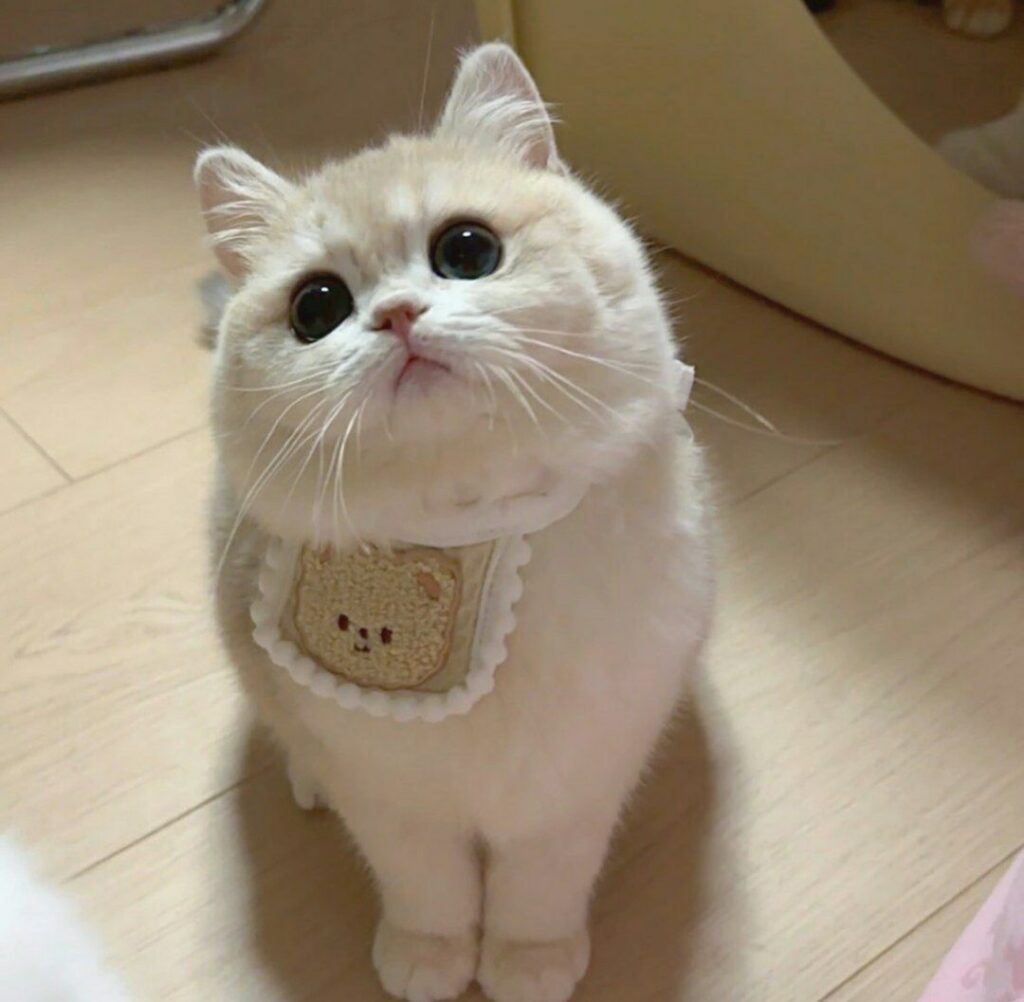

Minimizing Risks:
- The Power of Sleep: Sleep plays a crucial role in strengthening a kitten’s immune system. Providing a warm, comfortable, and quiet environment encourages restful sleep, allowing their bodies to focus on building their defenses.
- Hygiene and Sanitation: Maintaining a clean and sanitary environment is vital during this vulnerable stage. Regularly disinfecting bedding, food and water bowls, and the surrounding area helps prevent the spread of bacteria and viruses.
- Minimize Stress: Stress can further weaken a kitten’s immune system. Minimize disruptions and interactions with strangers during this sensitive period.
- Veterinary Guidance: Consult your veterinarian to determine the optimal vaccination schedule for your kittens, taking into account maternal antibody levels and overall health.
By understanding the “immunity gap” and taking proactive measures, breeders and pet owners can help kittens navigate this vulnerable period. Prioritizing sleep, hygiene, and stress reduction, along with consulting a veterinarian for a tailored vaccination schedule, contributes to a healthy transition into the next stage of kitten development.
A World of Play and Discovery: Exploring Kitten Behavior During Weaning
The weaning stage, roughly between four and eight weeks old, is a period brimming with fascinating behavioral developments in kittens. As they transition from relying solely on their mother to incorporating solid food, their world explodes with newfound social interaction, playfulness, and a sharper view of their surroundings.
Bonding with Siblings:
- Social Butterflies: Interaction with littermates becomes increasingly prominent during weaning. Kittens engage in playful wrestling, gentle swats, and even the beginnings of mutual grooming. These social interactions help them develop essential communication skills and establish social hierarchies within the litter.

The Joy of Play:
- Unleashing the Inner Hunter: Fueled by a surge in energy and curiosity, kittens around this stage become masters of play. They chase after toys, pounce on unsuspecting objects, and stalk imaginary prey. This playful behavior isn’t just fun; it’s a crucial part of their development, honing their hunting instincts, coordination, and muscle strength.
A World in Focus:
- Sharper Vision: By the time kittens reach the heart of the weaning stage, their eyesight has fully matured. This newfound clarity allows them to explore their surroundings with greater confidence and precision, further enhancing their play experiences.
Understanding these behavioral changes allows breeders and pet owners to create a stimulating environment for their weaned kittens. Providing them with plenty of safe and engaging toys caters to their natural playfulness. Additionally, allowing them continued interaction with their littermates fosters social development and prepares them for future interactions with other felines.
A Symphony of Senses: Unveiling Development During Weaning
The weaning stage, roughly between four and eight weeks old, is a whirlwind of development for kittens. It’s a time when their senses become fully functional, motor skills flourish, and social interactions lay the foundation for future behavior. Let’s delve into the remarkable transformations that occur during this critical period.
A World of Sensory Input:
- Smell: The Guiding Force: By the fourth week, a kitten’s sense of smell is fully mature. This powerful sense plays a vital role in their world, helping them locate their mother, find food, and even navigate their surroundings.
- Hearing the World: Hearing is also well-developed by the fourth week. Kittens can distinguish sounds and recognize their mother’s calls, further enhancing their ability to navigate and interact with their environment.
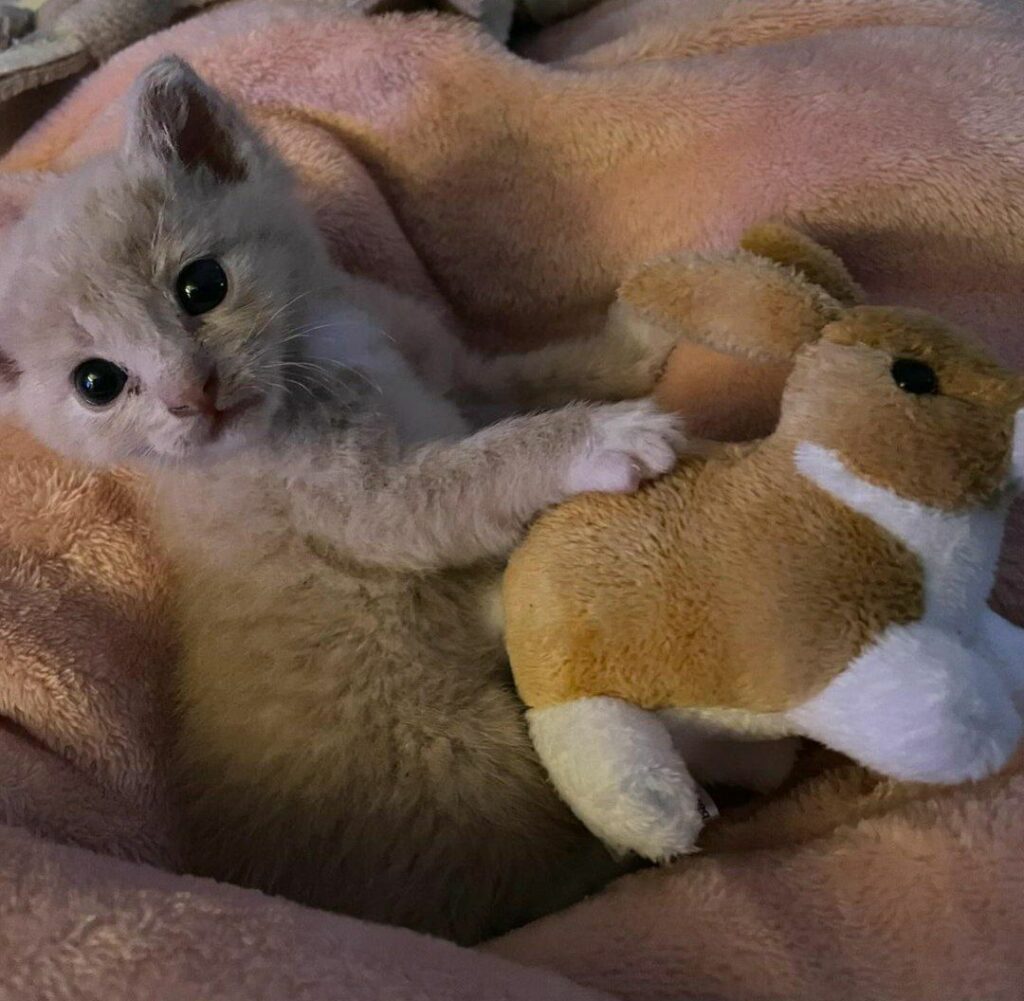
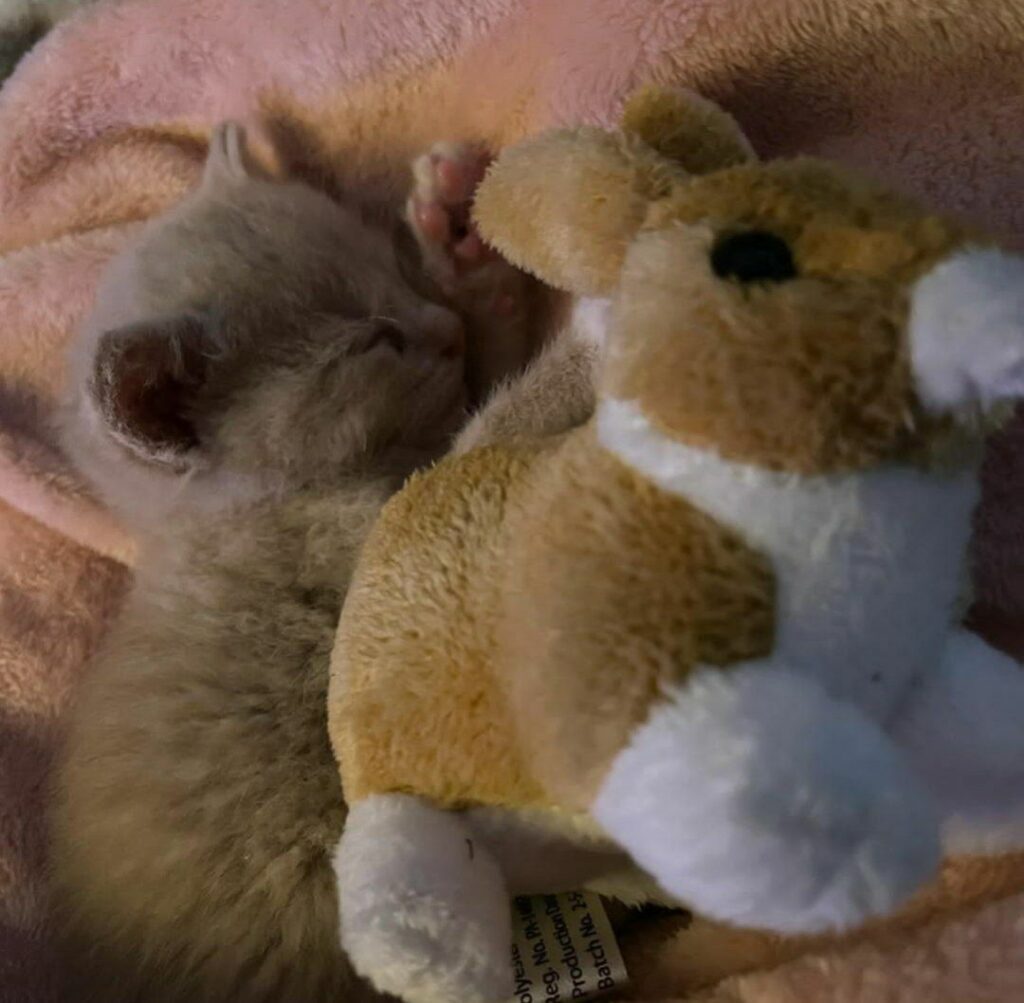
From Clumsy Crawls to Playful Prowls:
- Developing Dexterity: Between the sixth and seventh weeks, kittens’ motor skills undergo a significant transformation. They graduate from clumsy crawls to more coordinated movements, allowing them to explore their surroundings with greater ease and confidence.
- Sleeping Like Grown-Ups: Adult sleep patterns begin to emerge around this time. While they still require a significant amount of sleep, their sleep cycles become more similar to adult cats, with periods of activity interspersed with rest.
Learning Through Play and Observation:
- Social Butterflies Emerge: Interaction with littermates takes center stage during weaning. Through playful wrestling, gentle swats, and mutual grooming, kittens develop essential social skills like bite inhibition and communication. These interactions prepare them for future interactions with other cats.
- The Wisdom of the Mother: Kittens are keen observers, learning valuable life lessons by watching their mother’s behavior. From hunting techniques to grooming habits, they mimic her actions, shaping their own future behaviors.
Understanding these developmental milestones allows breeders and pet owners to create an enriching environment for their weaned kittens. Providing opportunities for safe play, positive social interaction with littermates, and observing their mother all contribute to a healthy and well-rounded development for their furry friends.
Creating a Safe Haven for Exploration: The Importance of a Kitten-Proofed Environment
As kittens navigate the weaning stage, their world expands exponentially. Fueled by a surge in curiosity and newfound mobility, they transform from relatively stationary bundles of fur into playful explorers. To ensure their safety and well-being during this adventurous phase, creating a “kitten-proofed” environment is paramount.
A World of Exploration, A World of Risks:
- Boundless Energy: Weaned kittens are brimming with energy, propelling them to explore every nook and cranny of their surroundings. Their newfound mobility, however, can expose them to unseen dangers.

Kitten-Proofing for Peace of Mind:
- Minimize Hazards: Electrical cords, poisonous plants, small objects that can be choking hazards – these are just a few of the potential dangers in a home. Kitten-proofing involves meticulously examining your living space and eliminating or securing anything that could pose a threat to a curious kitten. This might involve using cable organizers, keeping cleaning products out of reach, and closing off hazardous areas.
- Climbing Champions: Kittens are natural climbers, drawn to explore high places. Provide them with safe climbing structures like cat trees or scratching posts to redirect their climbing instincts away from furniture and curtains.
Enrichment Through Play:
- Stimulating Minds and Bodies: Kittens are intelligent creatures who thrive on mental and physical stimulation. Providing an assortment of safe and engaging toys caters to their natural playfulness and helps prevent boredom. Rotate toys regularly to keep things interesting, and consider interactive toys that encourage chasing or pouncing behaviors.
- Learning Through Interaction: The weaning stage is a crucial time for socialization. Regular handling and interaction with different people help kittens become accustomed to human touch and build confidence around strangers. These positive experiences contribute to a well-adjusted and friendly adult cat.
By creating a safe and stimulating environment, breeders and pet owners can nurture their weaned kittens’ sense of exploration while minimizing potential dangers. Kitten-proofing your home, providing engaging toys, and prioritizing positive human interaction all contribute to a happy and healthy development for your furry friends.
From Fuzzball to Feline: Understanding a Kitten’s Growth Spurt
The weaning stage, roughly between four and eight weeks old, is a period of intense growth for kittens. Not only is their physical development accelerating, but this is also a critical time for social and behavioral development. Here’s a closer look at the transformations that occur during this remarkable period:
Building the Foundation for Life:
- Understanding Their World: Kittens begin to grasp their place within their social hierarchy, interacting with littermates and their mother in a more structured way. These early experiences shape how they view the world and interact with other cats in the future.
- Laying Down Lifelong Habits: Behaviors learned during this stage often stay with kittens for life. Positive experiences with humans, for example, contribute to a friendly and confident adult cat. Conversely, negative experiences during this crucial period can lead to fear or anxiety later in life.
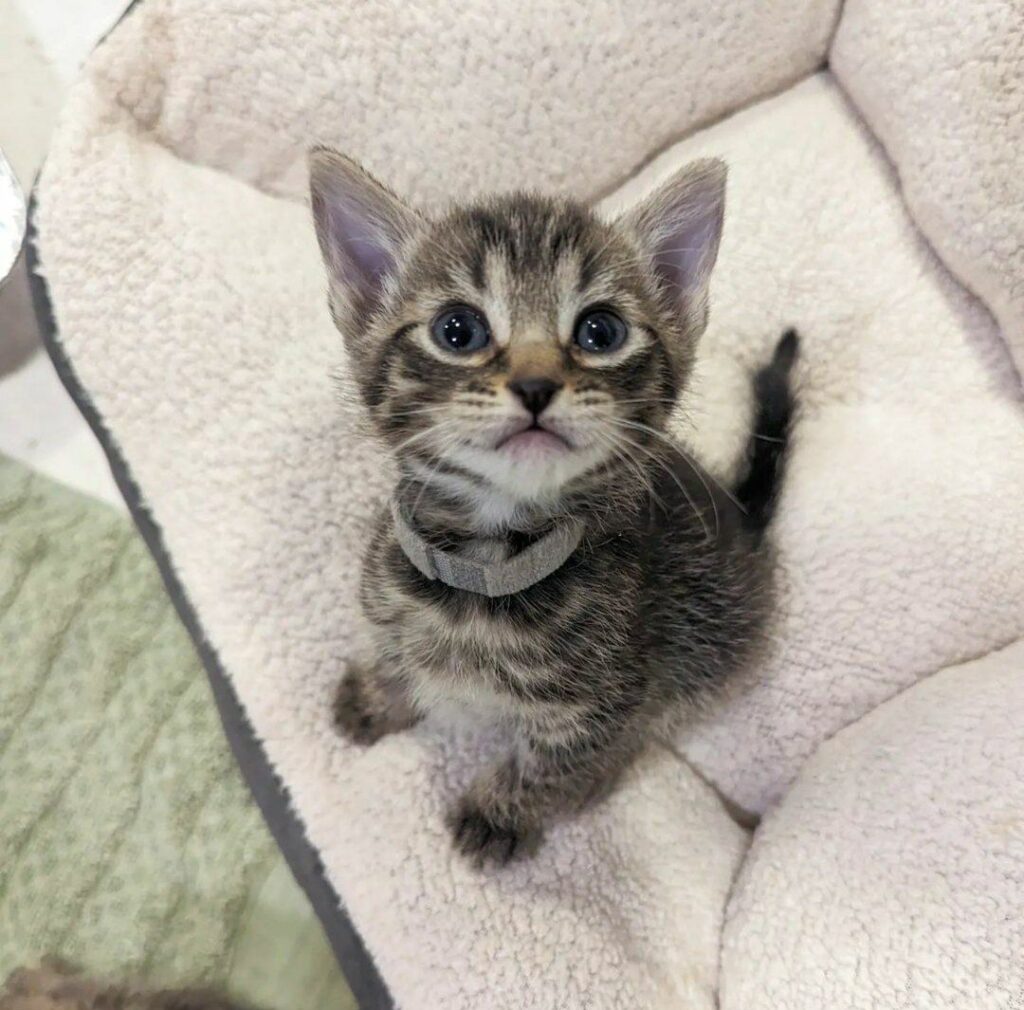
A Surge in Growth:
- Physical Transformation: Weight gain and muscle development are prominent features of this stage. Kittens are growing rapidly, fueled by the additional nutrients they receive from solid food. This physical growth is accompanied by the development of adult sleeping patterns and motor skills.
The Importance of Positive Experiences:
- Socialization is Key: During this sensitive period, kittens are particularly receptive to new experiences. Regular handling and interaction with different people help them become comfortable with human touch and build confidence in unfamiliar situations. This socialization is vital for raising well-adjusted adult cats.
- The Power of Play: Play isn’t just fun for kittens; it’s essential for their development. Interactive play sessions with humans or littermates hone their hunting instincts, coordination, and social skills. Providing a variety of safe and engaging toys caters to their natural curiosity and helps prevent boredom.
By understanding the significance of this intense growth period, breeders and pet owners can create a nurturing environment that fosters positive experiences. Positive socialization, stimulating play, and a safe space to explore all contribute to a kitten’s development into a happy, healthy, and well-adjusted adult cat.
At The Stage Of 2 - 4 Months
Safeguarding Your Feline Friend: Kitten Vaccinations Explained
Around eight weeks old, your adorable kitten reaches a crucial milestone – it’s prime time for their first vaccinations! Vaccinations are essential in protecting your furry friend from potentially life-threatening feline diseases. Let’s delve into the importance of vaccinations and how to ensure your kitten receives the necessary protection.
Building an Immunity Shield:
- Early Defense: Kittens receive antibodies from their mother’s milk in the early weeks of life. However, these antibodies gradually decline. Vaccinations help stimulate the kitten’s immune system to develop its own defenses against specific diseases.
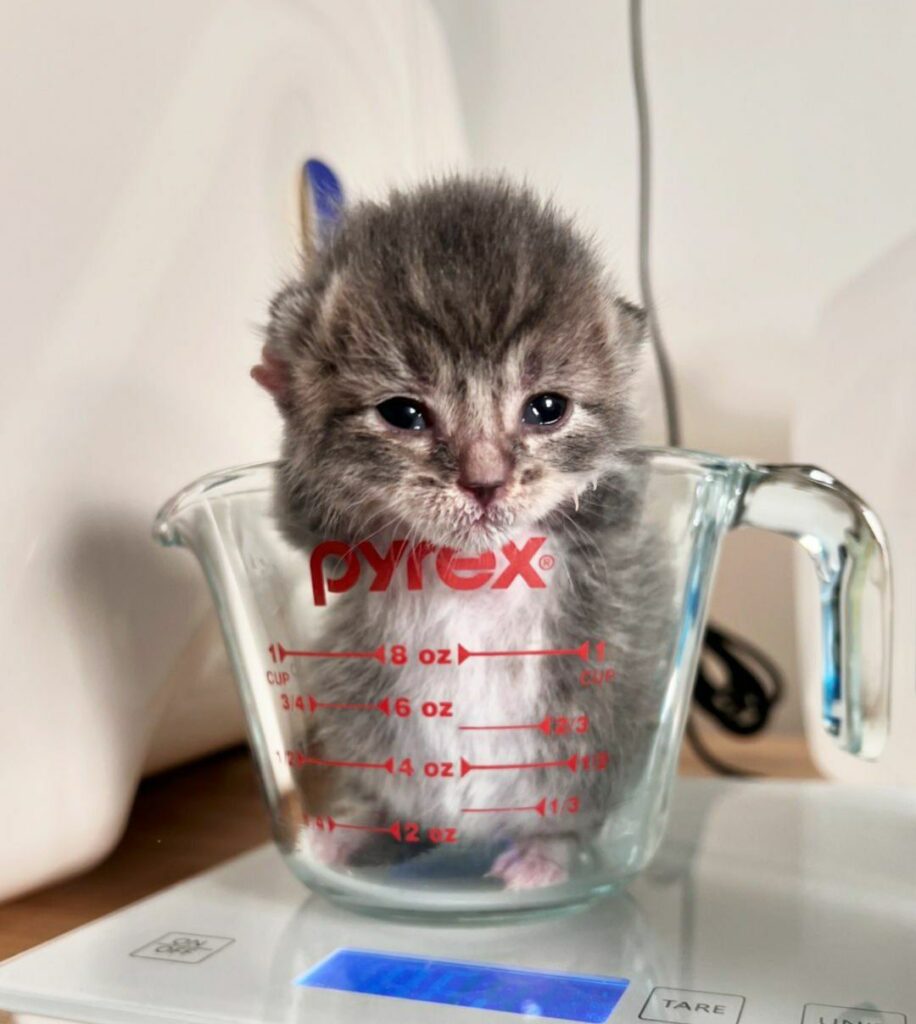
Core Vaccinations:
- Protecting Against Common Threats: Core vaccinations shield your kitten from some of the most common and serious feline illnesses. These typically include feline distemper (panleukopenia), feline viral rhinotracheitis (feline herpes virus 1), calicivirus, and rabies.
- A Two-Step Process: The initial vaccination is administered around eight weeks old, with a booster shot following three to four weeks later. This two-step process ensures a robust immune response.
Consulting Your Veterinarian:
- Tailored Vaccination Schedule: Every kitten is unique. Your veterinarian will consider your kitten’s health, lifestyle, and potential risk factors to create a personalized vaccination schedule. This might include additional vaccines depending on your geographic location and your kitten’s potential exposure to certain diseases.
- Ongoing Protection: Vaccination is an ongoing process. Booster shots are typically required annually throughout your cat’s life to maintain optimal protection.
Taking Action:
- Schedule an Appointment: Don’t wait! Contact your veterinarian to schedule your kitten’s first vaccination appointment around eight weeks of age. This timely action helps safeguard your kitten’s health from a young age.
- Record Keeping: Maintain a record of your kitten’s vaccinations. This information is vital for ensuring they receive the necessary booster shots at the appropriate intervals.
By understanding the importance of vaccinations and working closely with your veterinarian, you can ensure your kitten receives the vital protection needed to live a long and healthy life. Remember, timely vaccinations are not just about protecting your kitten; they also help safeguard the health of the entire feline community.

Fueling Growth: Nutritional Needs During Weaning
As a kitten transitions from a milk-based diet to solid food during weaning (around 4-8 weeks old), their digestive system undergoes significant changes. While they’re eager to explore the world of solid food, their little bodies can’t handle everything just yet. Here’s why choosing the right nutrition during this crucial stage is essential:
A Delicate Digestive System:
- Limited Digestive Capabilities: A kitten’s digestive system is still maturing during weaning. They may struggle to digest certain complex nutrients found in adult cat food.
Meeting Specific Needs:
- Tailored Kitten Food: Kitten food is specially formulated to address these limitations. It’s packed with easily digestible proteins, fats, carbohydrates, vitamins, and minerals that cater to a growing kitten’s specific needs.
- Essential Nutrients for Growth: Kitten food provides the right balance of nutrients to support rapid growth and development. These include essential amino acids for muscle building, calcium for strong bones and teeth, and DHA for healthy brain development.
Maximizing Nutrition:
- Gradual Transition: The switch from milk to solid food should be gradual and introduced under the guidance of a veterinarian. Starting with moistened kitten food eases the transition for their developing digestive system.
- Monitor Food Intake: Keep an eye on your kitten’s food intake and weight gain during weaning. If they seem disinterested in food or aren’t gaining weight steadily, consult your veterinarian.
Understanding a kitten’s unique nutritional needs during weaning allows breeders and pet owners to make informed choices about their diet. Choosing a high-quality kitten food formulated for their developmental stage ensures they receive the essential building blocks needed to thrive.
Here are some additional points to consider:
- Water is Essential: While kittens are getting most of their fluids from mother’s milk initially, providing a shallow bowl of fresh, clean water is crucial as they transition to solid food.
- Avoid Cow’s Milk: Cow’s milk can be difficult for kittens to digest and may cause diarrhea. Stick to clean water or kitten formula recommended by your veterinarian.
By providing a balanced diet specifically designed for their delicate digestive system, you can ensure your furry friend gets the vital nutrients and energy needed to flourish during this critical growth period.
A Social Butterfly Emerges: Understanding Kitten Behavior During Weaning
The weaning stage, roughly between four and eight weeks old, is a fascinating period for kitten behavior. Fueled by a surge in curiosity and confidence, kittens transform from relatively independent explorers to social creatures eager to interact with the world around them. This is a critical time for learning and development, as their behavior is heavily influenced by their social interactions.
Learning from Others:
- Mirror, Mirror on the Wall: Kittens are keen observers, mimicking the behavior of those around them. Interaction with littermates teaches them valuable social skills like bite inhibition and communication. Observing their mother can shape hunting techniques and overall behavior.
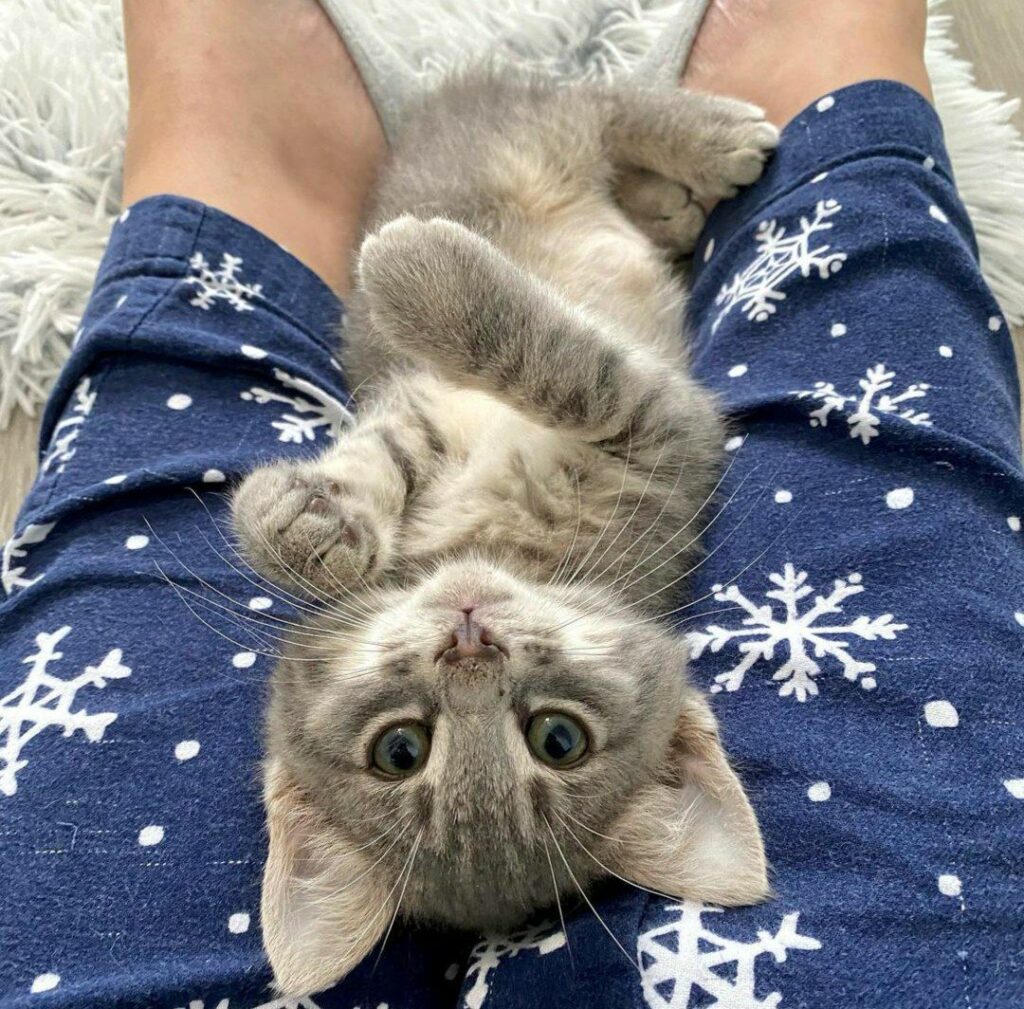
- The Human Touch: Positive interactions with humans during weaning are crucial for socialization. Gentle handling and playtime help kittens become accustomed to human touch and build confidence around strangers. These experiences contribute to a well-adjusted and friendly adult cat.
Finding Their Place:
- Understanding Hierarchy: Kittens begin to grasp their position within the social hierarchy around them. Playful wrestling with littermates establishes dominance and teaches valuable social skills. This understanding of their place within the household extends to humans as well.
Shaping Personalities:
- A Lasting Impact: The experiences a kitten has during weaning can have a lasting impact on their personality. Positive interactions with humans, littermates, and other pets contribute to a confident and well-adjusted adult cat. Conversely, negative experiences during this crucial period can lead to fear or anxiety later in life.
Creating a Positive Social Environment:
- Supervised Interactions: If you have other pets, ensure supervised introductions during weaning. This allows the kitten to become accustomed to their presence in a safe and controlled environment.
- Gentle Handling: Make handling a positive experience. Use playtime and treats to create a positive association with human touch.
- Playtime is Key: Interactive play sessions with humans or littermates are essential for social development. They provide an outlet for energy, strengthen social bonds, and teach valuable communication skills.
By understanding the significance of social interaction during weaning, breeders and pet owners can create a nurturing environment that fosters positive experiences. Positive socialization with humans, littermates, and other pets all contribute to a kitten’s development into a happy, healthy, and well-adjusted adult cat.
Building a Bond: The Importance of Human Interaction During Weaning
The weaning stage, roughly between four and eight weeks old, is a pivotal period for a kitten’s development, especially when it comes to human relationships. Here’s why positive interactions and consistent behavior are crucial for laying the foundation for a lifelong bond between you and your feline friend.
A Window of Opportunity:
- Prime Time for Socialization: Kittens between four and eight weeks old are particularly receptive to new experiences. This period is often referred to as the “socialization window.” Positive interactions with humans during this time lay the groundwork for a trusting and affectionate relationship.
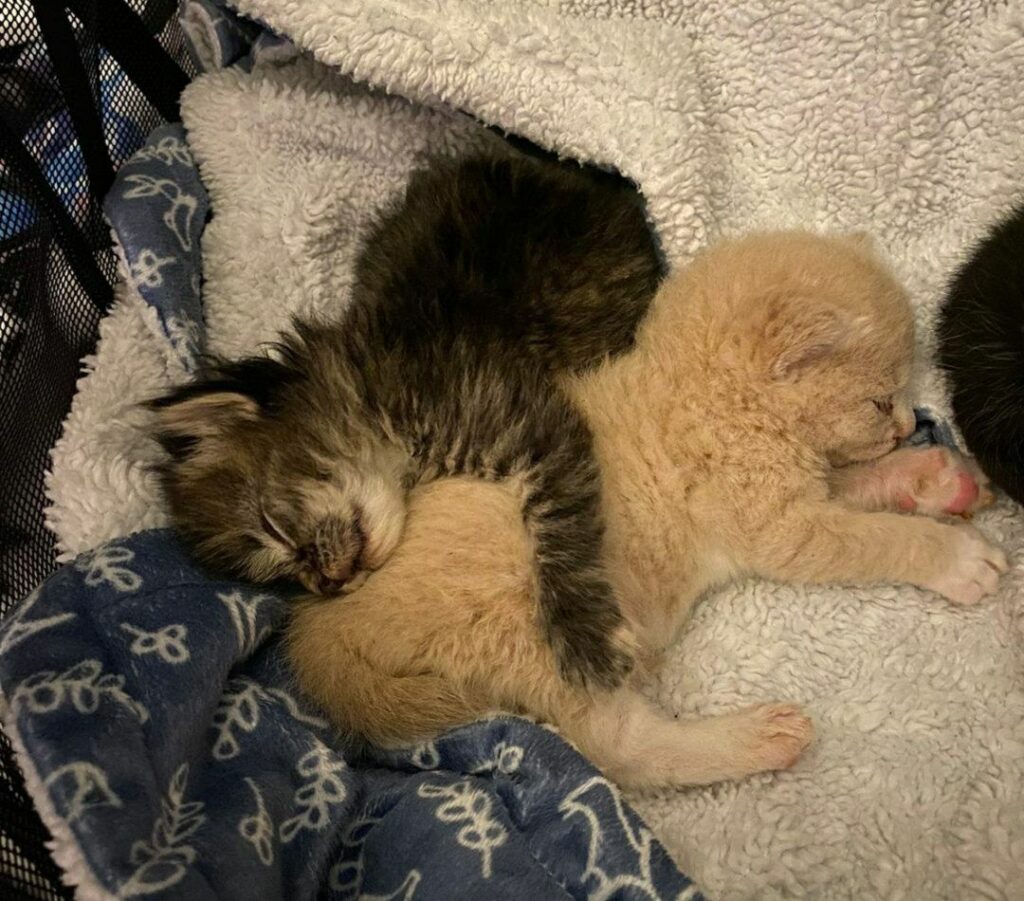
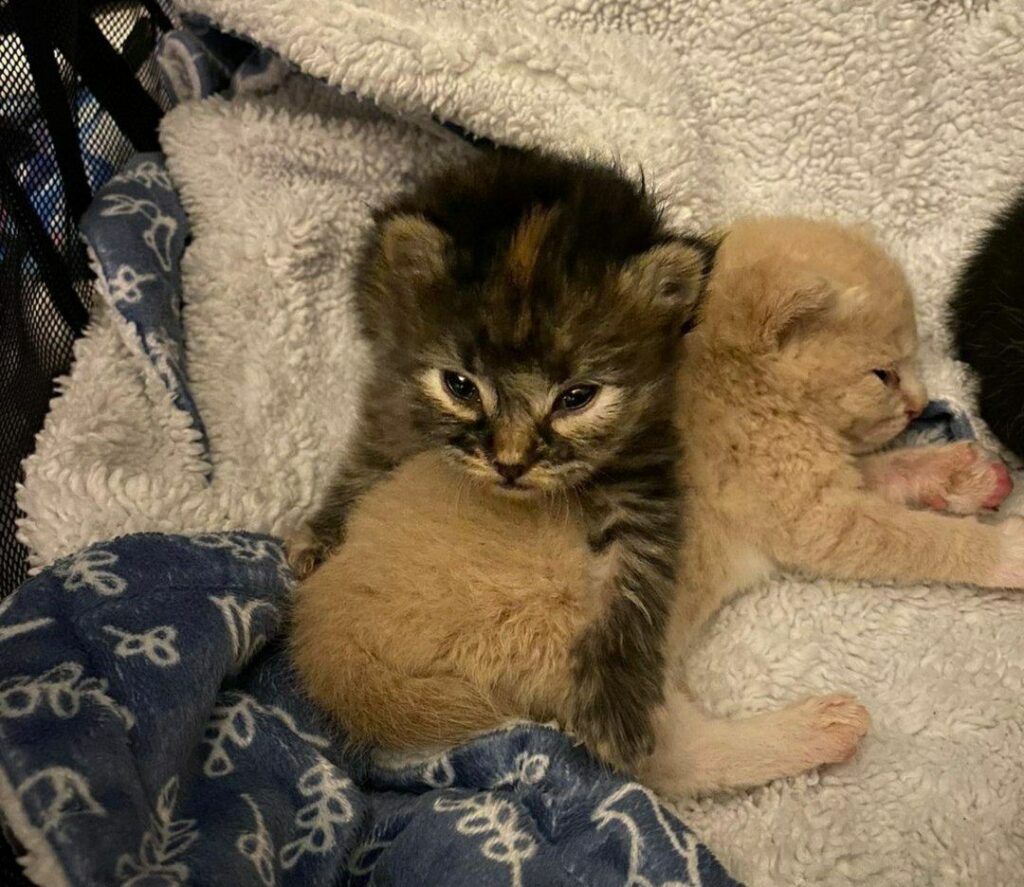
Building a Foundation of Trust:
- Consistency is Key: Maintaining consistent routines and expectations during weaning helps kittens feel secure and build trust in their human companions. Simple things like feeding them at regular times, using gentle handling techniques, and providing a predictable environment all contribute to a positive association with humans.
- Shower Them with Affection: Positive reinforcement goes a long way. Offer gentle strokes, playtime with interactive toys, and soothing words to create positive associations with human touch and interaction.
Investing in the Future:
- Effective Socialization Matters: The effort invested in socialization during weaning pays off significantly in the long run. A well-socialized kitten is more likely to grow into a confident, well-adjusted adult cat who enjoys human interaction. This translates to a happier and more manageable companion for you.
Creating Positive Experiences:
- Supervised Playtime: Engage your kitten in interactive play sessions. Use toys like feather wands or catnip-filled mice to encourage their natural hunting instincts. This not only provides exercise but also strengthens your bond.
- Gentle Handling: Pick up your kitten with support, cradling them securely. Avoid grabbing at the scruff of their neck, as this can be frightening. Make handling a positive experience by offering treats or praise.
- Positive Introductions: If you have other pets, introduce them gradually and in a controlled environment. Ensure the kitten has a safe space to retreat to if needed.
By understanding the importance of human interaction during weaning and actively fostering positive experiences, you can build a strong and lasting bond with your kitten. This investment in time and effort sets the stage for a lifetime of companionship and enjoyment with your furry friend.
Saying Goodbye (and Hello!): Preparing the Perfect New Home for Your Kitten
The weaning stage, roughly between four and eight weeks old, marks a significant turning point for kittens. As they transition from relying solely on their mother to incorporating solid food and exploring their surroundings with newfound confidence, it’s also the time they can begin their journey to their forever homes.
The Ideal Age for Adoption:
- Varying Timelines: The optimal age for adopting a kitten can vary depending on several factors, including breed, development milestones, and the kitten’s relationship with its mother and littermates. While some breeders or shelters may place kittens as early as eight weeks old, others may wait until twelve weeks.
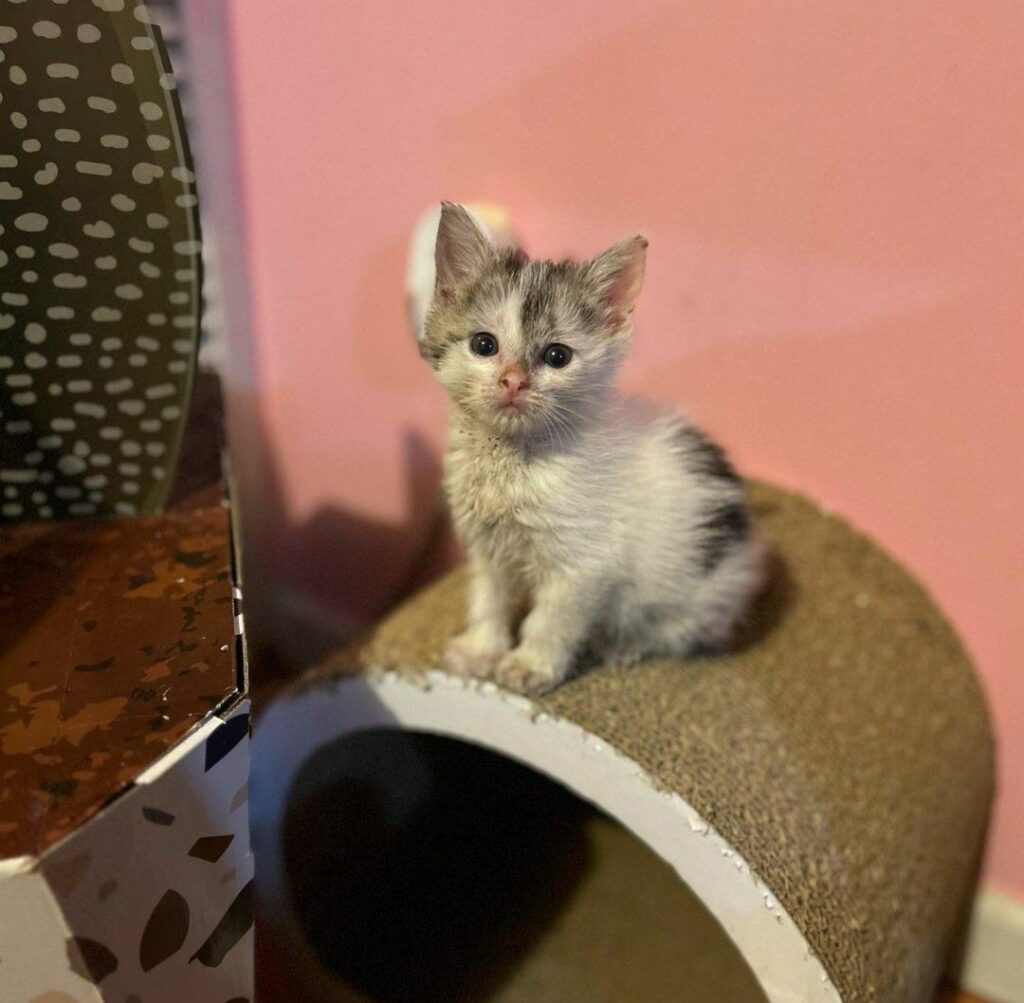
Preparing a Safe Haven:
- Kitten-Proofing is Essential: Regardless of when you welcome your new feline friend, creating a safe and secure environment is paramount. This means:
- Securing Electrical Hazards: Cover electrical cords and outlets to prevent curious kittens from chewing or getting shocked.
- Window and Door Safety: Ensure all windows and balcony doors are securely closed or have sturdy screens to prevent escapes. Consider cat fencing for balconies or outdoor areas.
- Stairway Safety: If you have stairs, consider installing gates to prevent accidental falls.
- Clearing the Clutter: Pick up any small objects, sharp items, or toxic plants that could pose a choking hazard or cause poisoning.
Creating a Welcoming Space:
- Cozy Bedding: Provide a comfortable and soft bed for your kitten to sleep and relax in. Choose a location that feels safe and secure, away from drafts or high-traffic areas.
- Litter Box Basics: Set up a litter box in a quiet and easily accessible location. Use a shallow litter box for young kittens and unscented clumping litter.
- Food and Water Stations: Place food and water bowls in separate locations away from the litter box. Choose shallow, wide bowls that are easy for your kitten to access.
- Interactive Toys: Stock up on a variety of safe and engaging toys to stimulate your kitten’s natural playfulness and curiosity. Rotating toys regularly helps keep things interesting.
By understanding the weaning stage and preparing a safe and welcoming environment, you can ensure a smooth transition for your new furry friend. Taking the time to kitten-proof your home, provide essential supplies, and create a cozy space sets the stage for a happy and fulfilling life together.
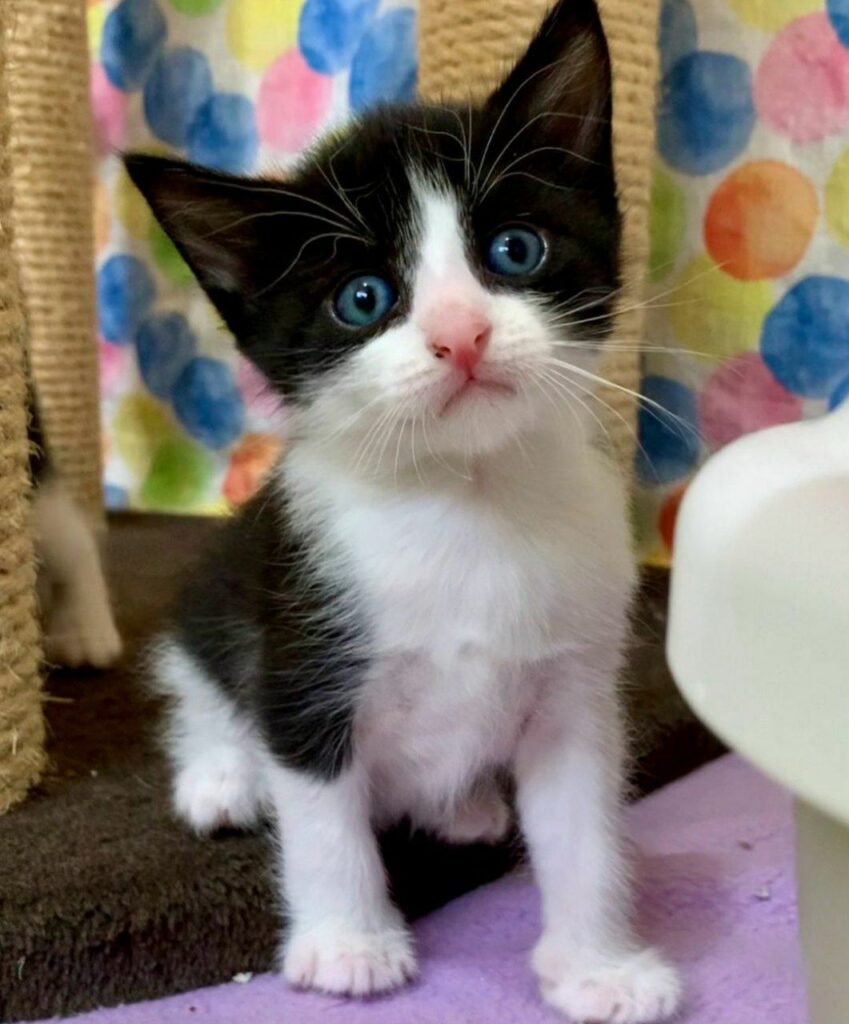
From Fuzzy Kitten to Feline Fine-Tuning: Understanding Sustained Growth After Weaning
The weaning stage, roughly between four and eight weeks old, marks a significant turning point in a kitten’s life. It’s a period of intense development, not just physically but also socially and behaviorally. However, the journey to adulthood doesn’t end there. Here’s a look at what unfolds after weaning, during this sustained growth phase:
A Continued Transformation:
- Physical Maturation: While kittens experience a growth spurt during weaning, their physical development continues steadily for several months. They’ll gain muscle mass, their bones will become denser, and their adult coat will come in fully. Depending on the breed, this process can take anywhere from six months to a year.
Reaching Full Potential:
- Gradual Refinement: After the initial growth spurt, development slows down, focusing on refining skills and reaching full physical maturity. This includes further honing their coordination, perfecting their hunting techniques through play, and establishing dominance hierarchies within their social circles.
Maintaining Momentum:
- Nutritional Needs Evolve: As kittens mature, their dietary needs change. They require less calorie-dense food compared to the rapid growth phase. Opt for a high-quality kitten food formulated for their specific age group to ensure they receive the necessary nutrients for continued development.
- Playtime is Still Vital: Interactive play sessions remain essential throughout this sustained growth period. They provide mental and physical stimulation, strengthen the bond between you and your feline friend, and help refine their hunting instincts and coordination.
The Road to Adulthood:
- The Age of Independence: As kittens approach adulthood (roughly one year old), they become more independent. However, this doesn’t negate the importance of human interaction. Maintaining positive reinforcement through training, petting, and playtime fosters a strong and lasting bond with your cat.
Understanding this sustained growth phase allows pet owners to continue providing the care and support their maturing feline companions need. Meeting their evolving nutritional needs, engaging in stimulating playtime, and offering consistent affection all contribute to a healthy and well-adjusted adult cat.
At The Stage Of 4+ Months
Marking Territory and Maturing Milestones: Nearing Neutering Time
As kittens transition from the intense development of weaning towards adulthood, a new behavior emerges – scent marking. This behavior, along with some physical changes, indicates that puberty is on the horizon, making neutering a timely topic to discuss with your veterinarian.
Scent Marking: A Sign of Maturity
- Communicating Boundaries: Between the ages of around six and twelve months, cats may begin spraying urine or rubbing their cheeks on objects, animals, and even humans. This behavior is a form of communication, leaving scent markers to define their territory and signal their sexual maturity.
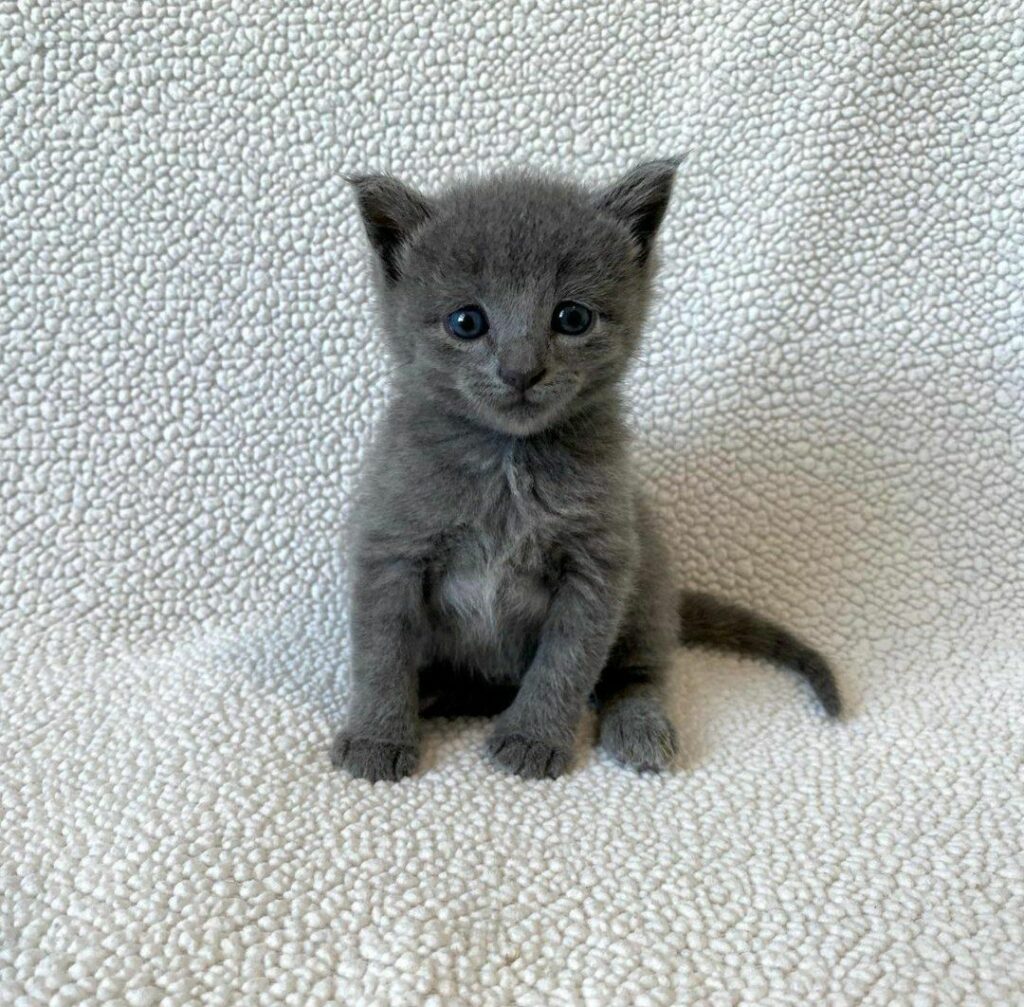
The Importance of Neutering:
- Curbing Unwanted Behaviors: Spraying urine can be a highly unpleasant behavior for pet owners. Neutering, typically performed between six and twelve months of age, significantly reduces the likelihood of spraying in both male and female cats.
- Health Benefits: Neutering offers a multitude of health benefits for your cat. In males, it reduces the risk of testicular cancer and prostate problems. In females, it eliminates the risk of uterine infections and pyometra (a serious infection of the uterus).
- Population Control: Spaying and neutering pets plays a crucial role in preventing pet homelessness and overpopulation.
Consulting Your Veterinarian:
- Tailored Solutions: Every cat is unique. Your veterinarian can discuss the ideal neutering timeframe for your cat, considering their breed, health, and lifestyle factors.
- Addressing Concerns: Neutering is a routine surgery, but it’s normal to have questions or concerns. Your veterinarian can address any anxieties you may have and explain the procedure in detail.
Taking Action:
- Schedule a Consultation: Don’t wait until unwanted behaviors become a problem. Schedule an appointment with your veterinarian around the time your cat reaches six months old to discuss neutering and ensure a smooth transition into adulthood for your feline friend.
By understanding the significance of scent marking and the benefits of neutering, you can make informed decisions about your cat’s health and well-being. A timely conversation with your veterinarian ensures your cat receives the proper care and enjoys a long, healthy life.
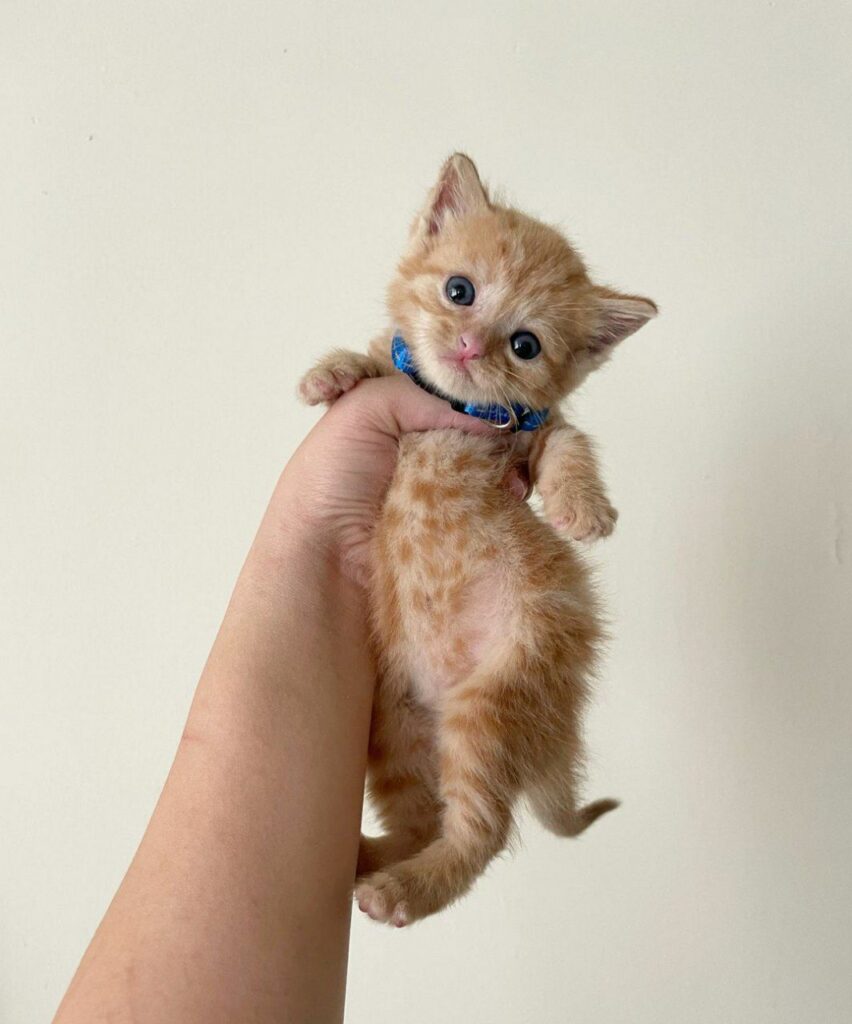
Fueling Feline Fine-Tuning: Tailoring Nutrition as Your Kitten Matures
As your adorable kitten progresses beyond the weaning stage and inches closer to adulthood, their dietary needs evolve. Here’s why transitioning to adult food and adjusting portion sizes are crucial for their continued health and well-being:
Shifting Gears for Growth:
- From Rapid Growth to Refinement: Kittens experience a growth spurt during weaning, requiring a calorie-dense diet to support their rapid development. However, as they approach physical maturity (around six months to a year old), their growth slows down, and their focus shifts to refining skills and building muscle mass.
Adult Food: The Right Fit:
- Tailored for Maturity: Adult cat food is formulated to meet the nutritional needs of a mature feline body. It contains a lower calorie content compared to kitten food, preventing excessive weight gain. Additionally, it provides the essential nutrients needed to maintain muscle mass, healthy bones, and a shiny coat.
Portion Control is Key:
- Matching Needs to Activity Level: The ideal portion size for your adult cat depends on several factors, including their breed, size, activity level, and whether they’ve been neutered/spayed. Neutering or spaying reduces a cat’s metabolic rate, so they may require slightly smaller portions to avoid weight gain. Active outdoor cats may have higher calorie needs compared to indoor felines.
Consulting Your Veterinarian:
- A Personalized Plan: Every cat is unique. Your veterinarian can help you determine the best adult food and ideal portion size for your feline friend, considering their individual needs and lifestyle.
- Monitoring Weight: Regularly weigh your cat to ensure they are maintaining a healthy weight. If you notice any significant weight gain or loss, consult your veterinarian to rule out any underlying health concerns.
Nutritional Considerations:
- Outdoor Explorers: If your cat enjoys venturing outdoors, consider a specially formulated “indoor/outdoor” cat food that provides additional calories to support their increased activity level.
- Weight Management: If your cat is prone to weight gain, there are special weight management formulas available. These foods are lower in calories and may contain increased fiber content to promote satiety.
By understanding the changing nutritional needs of your maturing cat and working closely with your veterinarian, you can ensure they receive the perfect balance of nutrients to support their health and well-being throughout adulthood.
Navigating Power Plays: Managing Dominance as Your Cat Matures
As your adorable kitten blossoms into a young adult (around 6 months to 1 year old), their behavior may shift. This is a natural part of their development, as they begin to explore dominance within the household hierarchy. Here’s how to maintain consistency and manage stress during this power struggle:
The Rise of the Teenage Cat:
- Testing Boundaries: Just like human teenagers, young cats may start to challenge established boundaries. This could involve playful swats, ignoring commands, or even spraying urine (particularly in unneutered males). It’s their way of testing their place in the social hierarchy and asserting their independence.
Maintaining Consistency is Key:
- Routines Rule: Upholding the routines and expectations established during your cat’s kittenhood provides a sense of security and predictability. Continue using consistent commands, feeding schedules, and litter box locations. This helps your cat feel secure and reduces stress levels.
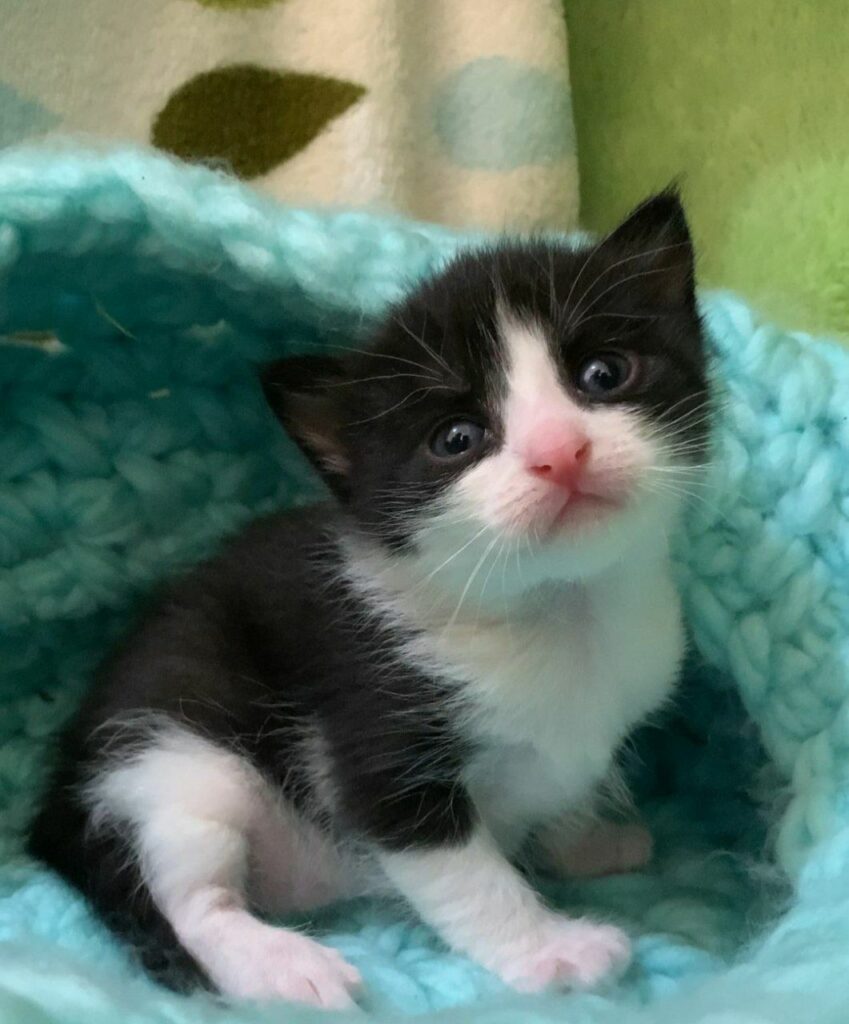
Positive Reinforcement Wins:
- Reward Good Behavior: Focus on rewarding your cat for positive behavior. Offer praise, treats, or petting sessions when they obey commands, use the scratching post, or interact with you appropriately. This reinforces desired behaviors and discourages unwanted ones.
Managing Stressful Situations:
- Channel Their Energy: Provide ample opportunities for your cat to expend their energy through interactive playtime. This helps them release pent-up frustration and redirects attention away from destructive behaviors.
- Create a Safe Space: Ensure your cat has a designated safe space to retreat to if they feel overwhelmed or stressed. This could be a cat tree perch, a cozy bed, or a quiet room.
Addressing Unwanted Behaviors:
- Don’t Reward Aggression: Never reward aggressive behavior, such as biting or scratching, with attention or treats. Instead, disengage by walking away or redirecting their attention with a toy.
- Seek Professional Help: If your cat’s dominance attempts become excessive or destructive, consider consulting a certified animal behaviorist. They can provide personalized strategies to address your specific situation.
By understanding the reasons behind your cat’s dominance exploration and maintaining consistent routines, positive reinforcement, and stress management techniques, you can navigate this stage and build a strong and lasting bond with your feline companion.
Here are some additional tips:
- Stay Calm: A calm and assertive demeanor is crucial. Avoid yelling or using physical punishment, as this can escalate the situation.
- Body Language Matters: Pay attention to your cat’s body language. Flattened ears, a swishing tail, or dilated pupils are signs of stress or aggression. If you see these signs, give your cat some space.
Remember, patience and consistency are key during this phase. With the right approach, you can help your maturing cat navigate their newfound independence and establish a harmonious relationship within your household.
The Final Stretch: Witnessing Your Kitten Blossom into an Adult Cat
As your cherished kitten progresses towards adulthood (roughly between six and eighteen months), their development takes center stage. This is a period marked by physical changes, hormonal shifts, and the culmination of all the learning and experiences they’ve accumulated thus far.
The Emergence of a Full Set of Pearly Whites:
- Teething Time: Around this stage, your kitten will begin developing their full set of 30 adult teeth. This process, similar to teething in human babies, can cause discomfort. Provide them with safe and appropriate chew toys to help alleviate discomfort and redirect chewing behavior away from furniture.
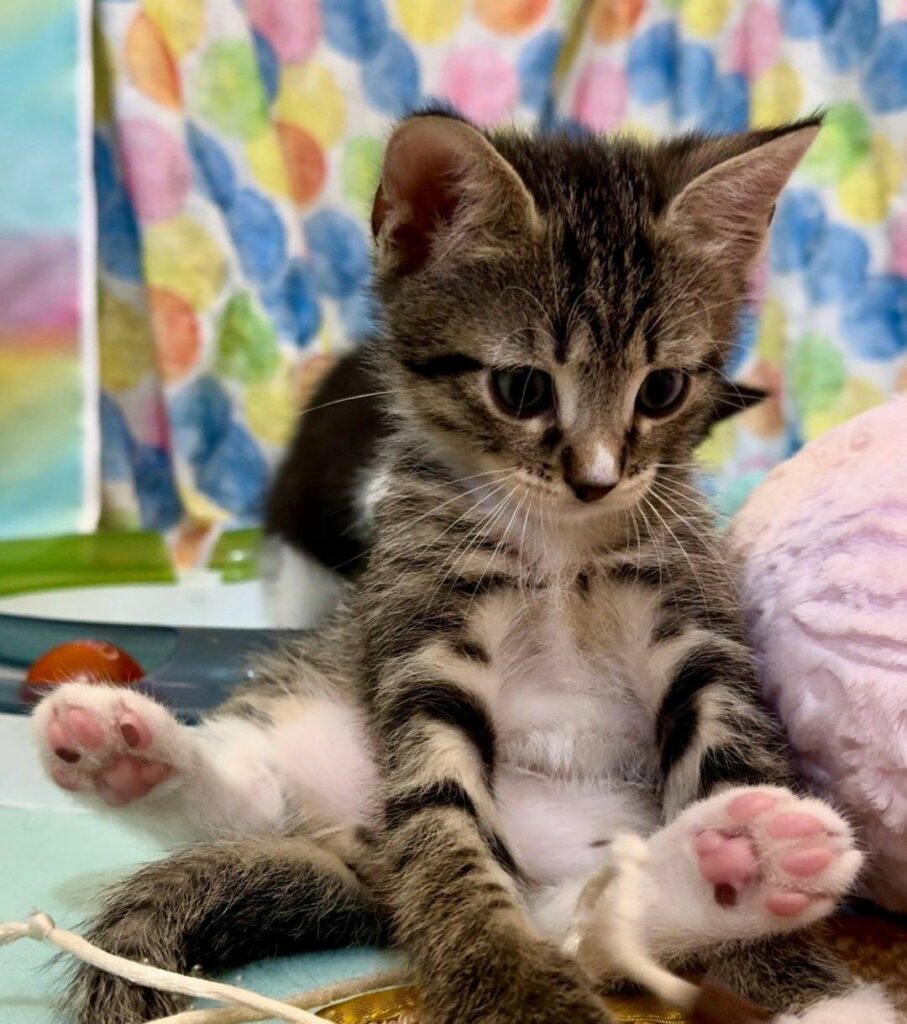
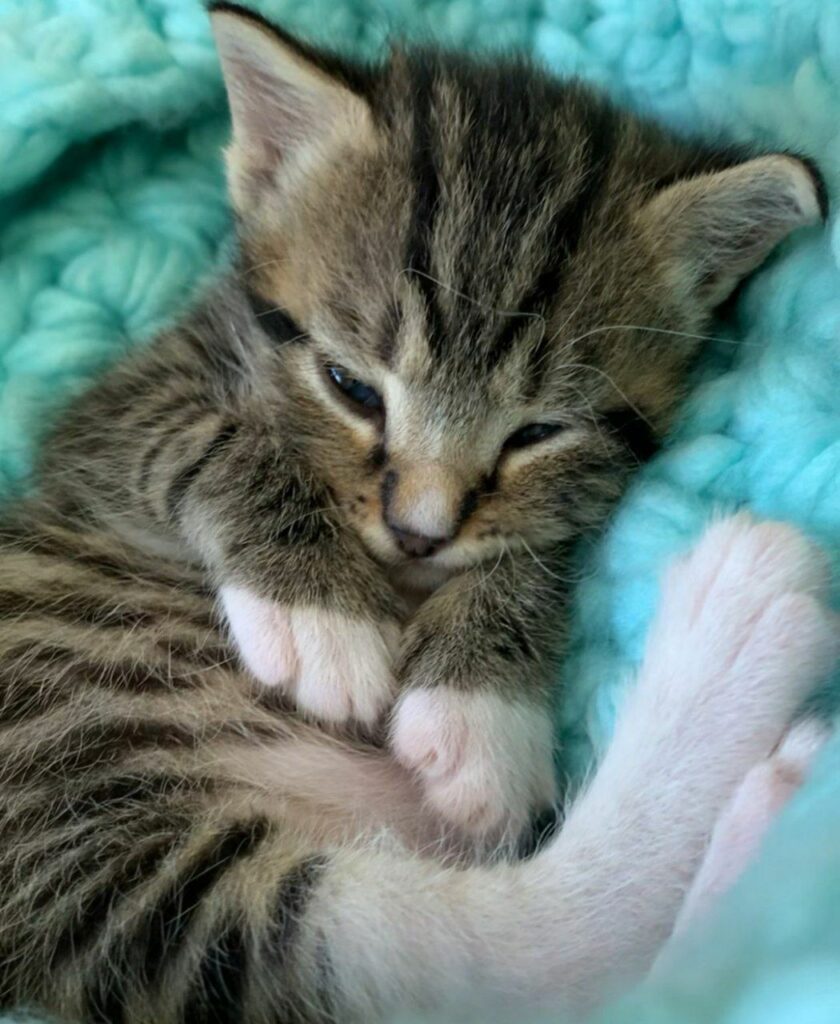
The Onset of Sexual Maturity:
- Neutering Considerations: If your kitten hasn’t been neutered, sexual maturity typically arrives around six months of age. This brings about hormonal changes and the potential for spraying urine and roaming behavior in males, and heat cycles in females. Spaying or neutering your cat is highly recommended to prevent unwanted behaviors, potential health problems, and pet overpopulation.
The Road to Full Size:
- Rapid Growth Slowdown: By eight months, your kitten will likely have reached around 80% of their adult weight. Their rapid growth phase starts to slow down, with a focus on building muscle mass and achieving their full size.
The Arrival of Adulthood:
- Breed Variations: The exact timeframe for reaching adulthood can vary depending on breed. Smaller breeds tend to mature faster, while larger breeds may take up to fifteen months to reach their full size.
A Well-Rounded Feline:
- A Culmination of Development: By the time your cat reaches adulthood, they’ve developed physically, mentally, and socially. They’ve learned appropriate behavior through interaction with you and other pets, honed their hunting instincts through play, and established their place within the household.
Celebrating the Journey:
- A Lifetime Bond: Witnessing your kitten blossom into a confident and healthy adult cat is a rewarding experience. The foundation you laid during their early development through positive reinforcement, proper socialization, and consistent care sets the stage for a lifelong bond of love and companionship.
Here are some additional points to consider:
- Veterinary Care: Regular checkups with your veterinarian are essential throughout your cat’s life. These visits allow for early detection of potential health problems and ensure your cat receives the necessary preventive care.
- Ongoing Training: While the core foundation for behavior is established during kittenhood, training can continue throughout your cat’s life. Positive reinforcement techniques are key for teaching desired behaviors and ensuring a well-mannered feline companion.
By understanding the final stages of your kitten’s development and providing consistent care and love, you can create a fulfilling and enriching life for your furry friend well into their golden years.
Taking the Plunge: Safely Introducing Your Cat to the Great Outdoors
The world beyond windows and doors holds endless fascination for curious cats. If your feline friend has received all their vaccinations and reached around six months of age, you can start contemplating introducing them to the wonders of the outdoors. However, venturing outside requires a cautious and phased approach to ensure their safety and well-being.
Building Confidence Step-by-Step:
- Gradual Exposure: Don’t overwhelm your cat by suddenly thrusting them into the unknown. Start with supervised sessions in a securely enclosed outdoor space, like a catio or a screened-in porch. This allows them to acclimate to sights, sounds, and smells at their own pace.
- Leash Training (Optional): Consider leash training your cat. This provides a controlled way to explore the outdoors together. Start with short walks in a quiet area, gradually increasing the duration and complexity as your cat becomes more comfortable.
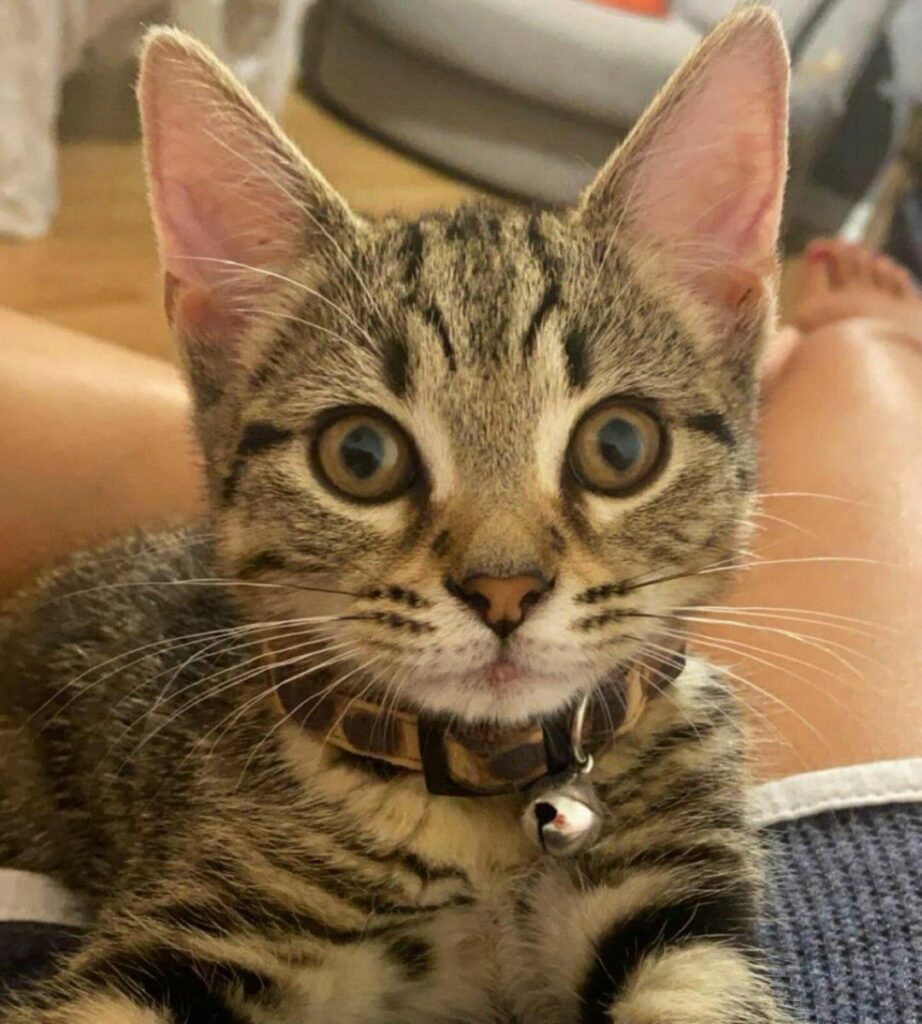
- Staying Close: Always supervise your cat when they’re outside, especially during the initial exploration phases. This allows you to intervene if they encounter anything frightening or attempt to escape.
Understanding Feline Instincts:
- The Roaming Range: Male cats tend to have a wider roaming range compared to females who typically stay closer to familiar territory. This difference is partly due to mating behaviors.
- The Importance of Consistency: Maintaining consistent routines and expectations is crucial for your cat’s sense of security. Establish clear boundaries for outdoor exploration and stick to them.
- Discipline with Kindness: If your cat attempts to break boundaries or exhibits unwanted behavior, address it calmly but firmly. Use positive reinforcement techniques like redirection or offering treats for good behavior.
Creating a Safe Outdoor Haven:
- Cat-Proofing the Yard: If you plan on allowing your cat unsupervised outdoor access, ensure your yard is escape-proof with secure fencing. Provide hiding spots and climbing structures to cater to their natural instincts.
- Identification is Key: Ensure your cat wears a collar with an ID tag and consider microchipping them for added security in case they do manage to escape.
The decision to allow your cat outdoors is a personal one. Some factors to consider include:
- Traffic Safety: Busy roads pose a significant danger to outdoor cats. If you live in a high-traffic area, leash training or a secured outdoor enclosure may be the safest options.
- Predators: Be mindful of potential predators in your area, such as coyotes or birds of prey. Supervised outdoor time or a secure enclosure can mitigate these risks.
By carefully planning and implementing a phased introduction to the outdoors, you can provide your cat with enriching experiences while prioritizing their safety and well-being. Remember, a happy and healthy cat is an indoor/outdoor cat with responsible supervision.
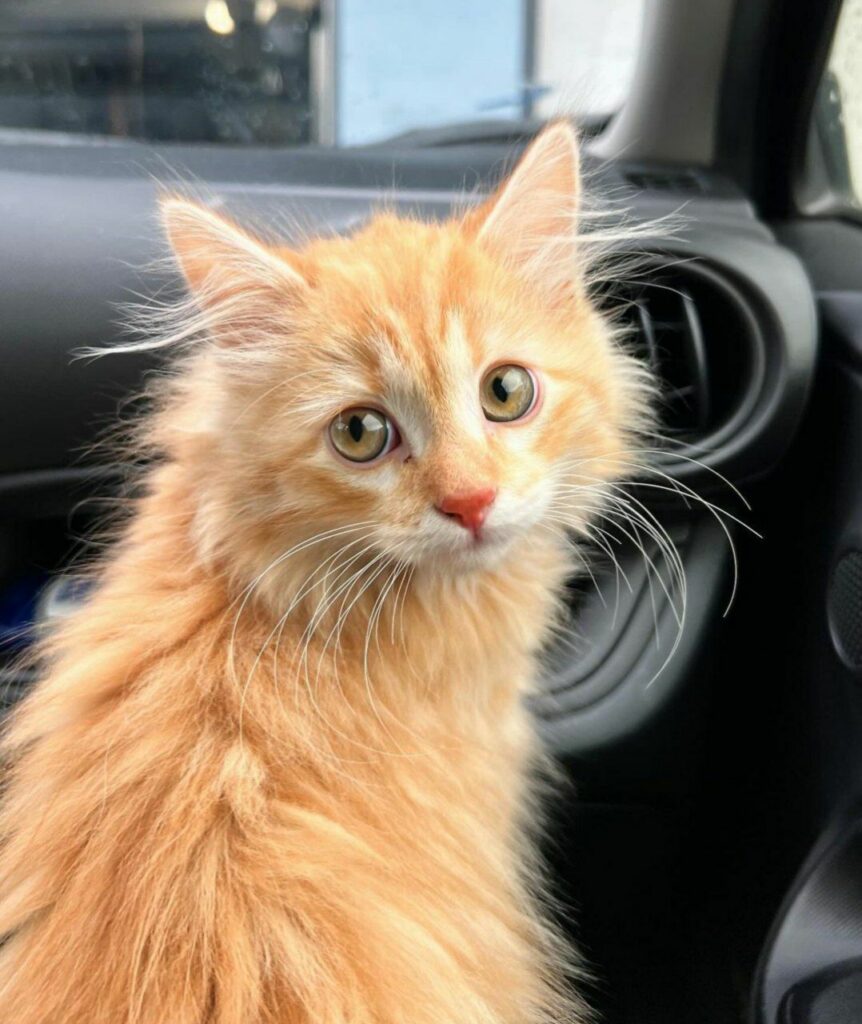
During their remarkable growth spurt, kittens experience an incredible weight gain, multiplying their birth weight by a staggering 40-50 times by the time they reach their adult size. This translates to a little ball of fluff weighing around 100 grams at birth transforming into a majestic adult cat tipping the scales at 4-5 kilograms! That’s an impressive weight gain in a relatively short period. Here’s a quick recap of a kitten’s growth journey:
- Birth: A tiny ball of fur weighing around 100 grams.
- Rapid Growth: Kittens experience a significant growth spurt during the weaning stage (4-8 weeks old) and continue to gain weight steadily throughout the following months.
- Adulthood: Depending on the breed, most cats reach their adult weight between 12-18 months old. By this point, they will have multiplied their birth weight by 40-50 times.
This remarkable weight gain is fueled by a diet specifically formulated for rapidly growing kittens. These diets are packed with essential nutrients to support the development of strong bones, muscles, and a healthy coat.
At The Stage Of 12-18 Months
Kittens typically reach adulthood around 12 months old, with some larger breeds taking up to 15 months to fully mature. This transition from a fast-growing kitten to a graceful adult cat signifies a shift in their dietary needs as well. Here’s a closer look at this crucial stage:
The Age of Adulthood:
- Milestone Achieved: By 12 months (or 15 months for larger breeds), your kitten has transformed into a fully grown adult cat. Their physical development is complete, with a focus on maintaining muscle mass and overall health.
A Change in Diet:
- Kitten Food Farewell: Kitten food is formulated for rapid growth and contains a higher calorie content compared to adult cat food. As your feline friend reaches adulthood, it’s time to gradually transition them to an adult cat food that better suits their matured needs.
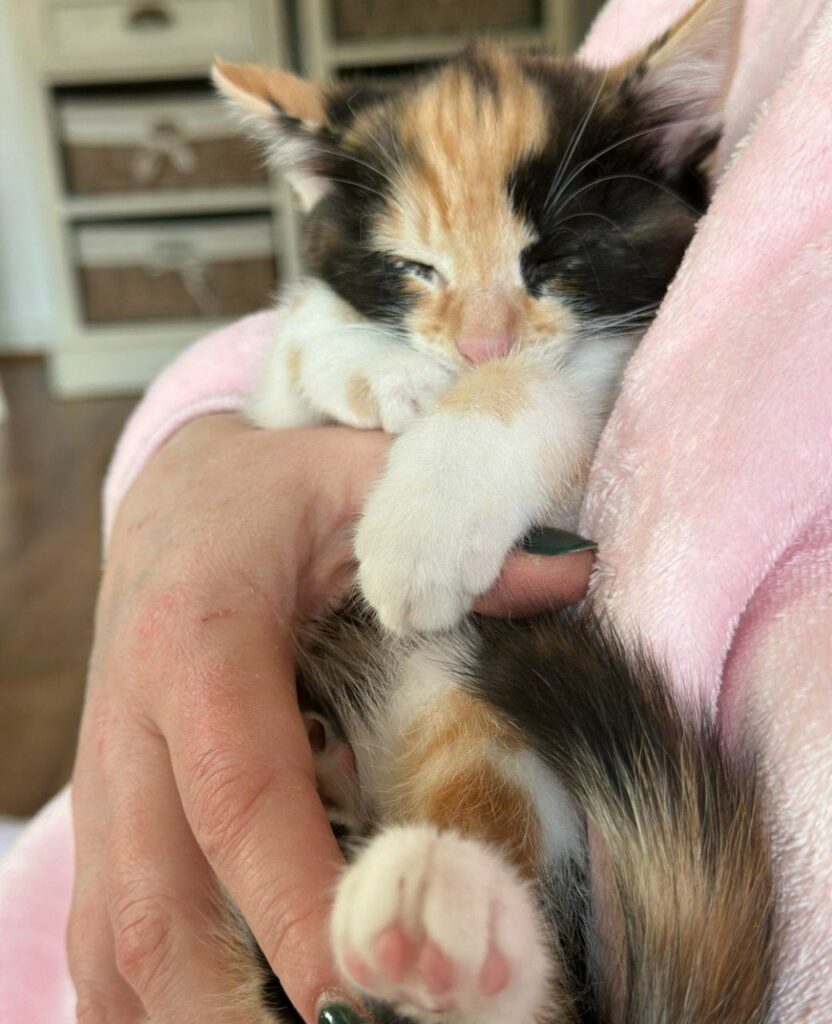
Tailoring Nutrition:
- Breed Matters: Different cat breeds have varying nutritional requirements. For example, active breeds like Maine Coons or Bengals may benefit from a food higher in protein to support their energy levels. Conversely, less active breeds may need a formula with moderate calorie content to prevent weight gain.
Lifestyle Considerations:
- Indoor vs. Outdoor: An indoor cat with limited activity levels will have different dietary needs compared to an outdoor cat who burns more calories through exploration. Choose a food that complements your cat’s lifestyle to ensure they receive the appropriate balance of nutrients.
Consulting Your Veterinarian:
- Expert Advice: Your veterinarian is a valuable resource when it comes to selecting the right adult cat food for your feline companion. They can consider your cat’s breed, activity level, and any potential health concerns to recommend the most suitable formula.
The Gradual Switch:
- Mixing It Up: Don’t abruptly change your cat’s food. Instead, gradually introduce the new adult food by initially mixing it with their kitten food in small amounts, slowly increasing the ratio of adult food over a period of 7-10 days. This helps avoid digestive upset.
By understanding the dietary shift required during your kitten’s transition to adulthood and consulting with your veterinarian, you can ensure your cat receives the optimal nutrition they need to thrive throughout their adult life.
